

Ben Zachariah
Move over, Patrol: New-era Ford Maverick SUV imagined
14 Hours Ago
Australia's two cheapest new electric cars face off. Are either of them worth a go, and which makes a better first impression?

Senior Contributor
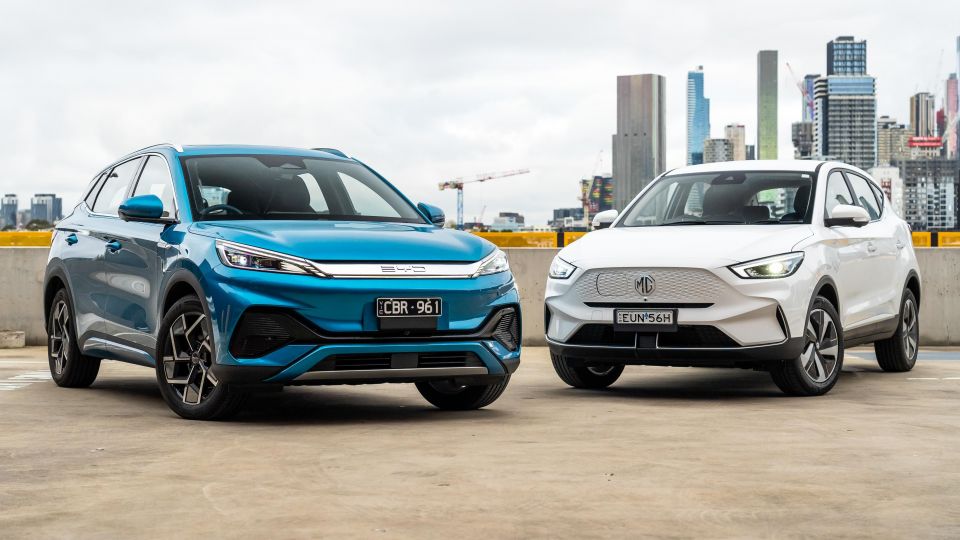

Senior Contributor
Australia’s two cheapest electric vehicles are Chinese small SUVs, called the BYD Atto 3 and MG ZS EV.
The former is new to the market, the latter just received a major update, and both are available for below $50,000 on the road.
With EV sales at a high point in Australia, hitting around 8 per cent market share in the most recent sales month, it’s safe to say there’s a lot of buyer interest.
Both BYD and MG’s local operations say they have stock coming through, numbering in the thousands of units.
Before we get stuck in, let’s just quickly do a recap on these two brands.
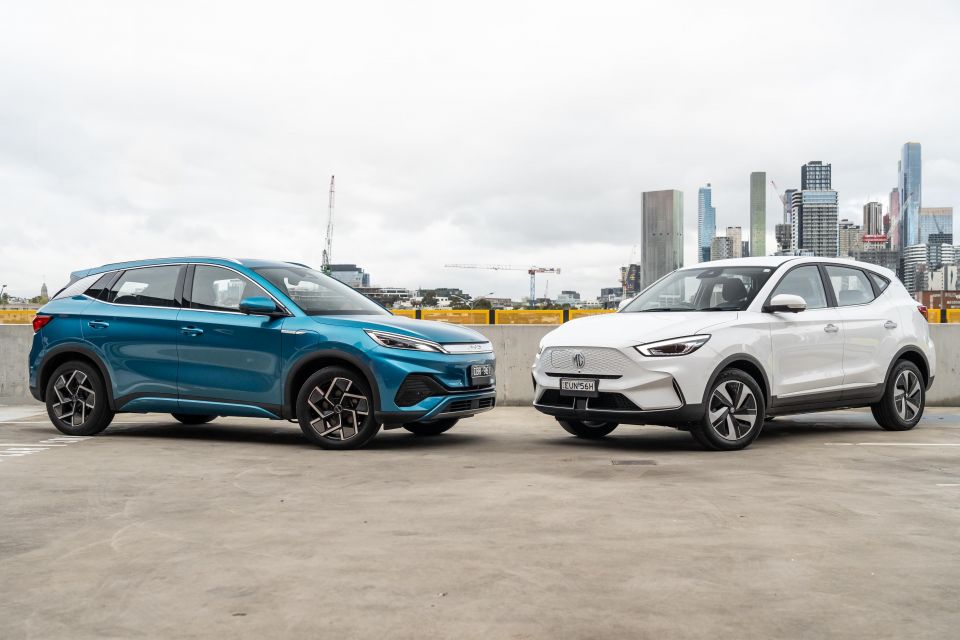
BYD – Build Your Dreams – is based in Shenzhen and counts Warren Buffett as a shareholder. Not only does it make EVs, but also its own batteries and even its own semiconductors.
The company is currently branching out into regions such as Europe and Japan, as well as Australia – where it has teamed up with a third-party distributor called EVDirect, which in turn has paired with dealer group Eagers to run showrooms.
MG is better known in Australia, having established itself as a top-seller of cheap petrol-powered light cars and small SUVs.
Its Australian operation is a full factory subsidiary unlike BYD’s, and has more than 80 franchise dealers up and running.
Globally MG is part of SAIC Motor based in Shanghai, which also owns the LDV light commercial brand among numerous others. It claims to be China’s biggest car-maker.
With the background out of the way, which of this pair makes a more compelling case for itself and why?
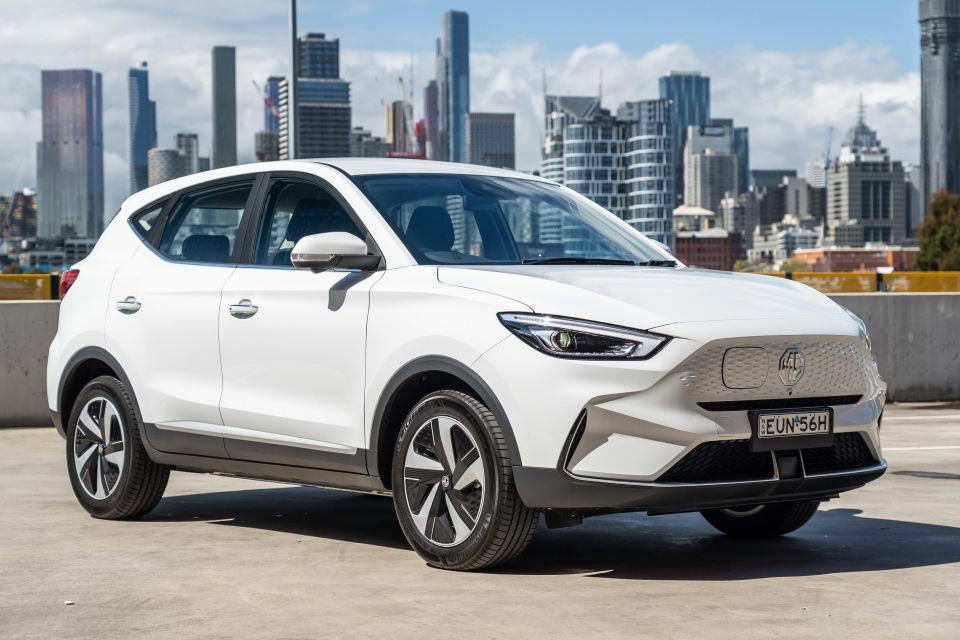
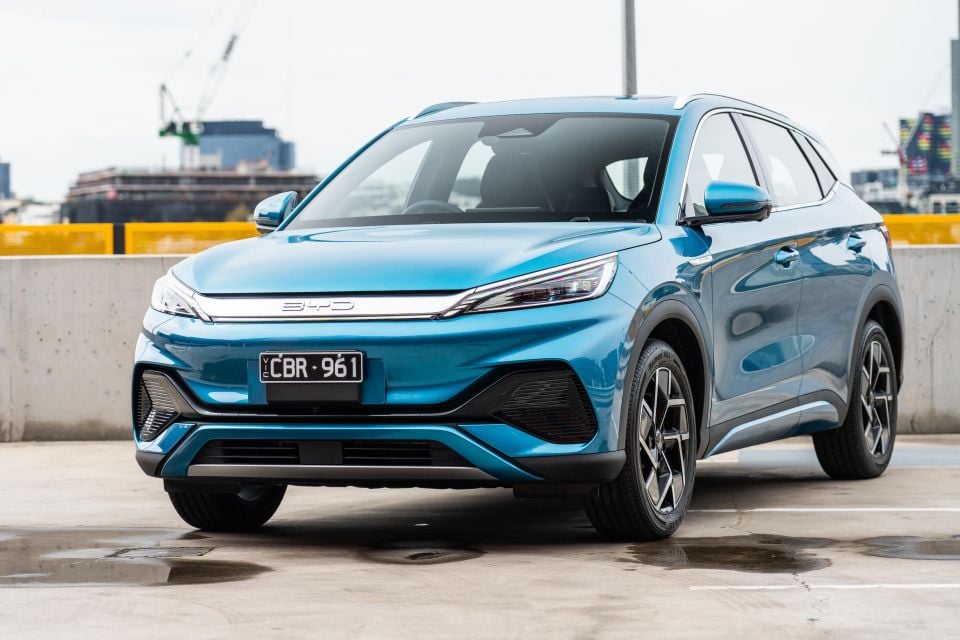
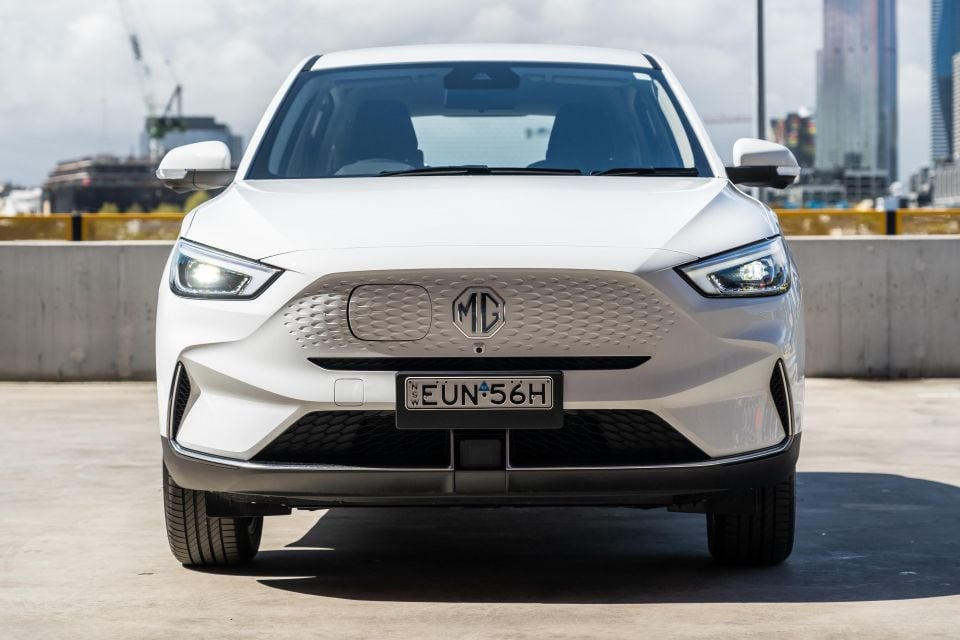
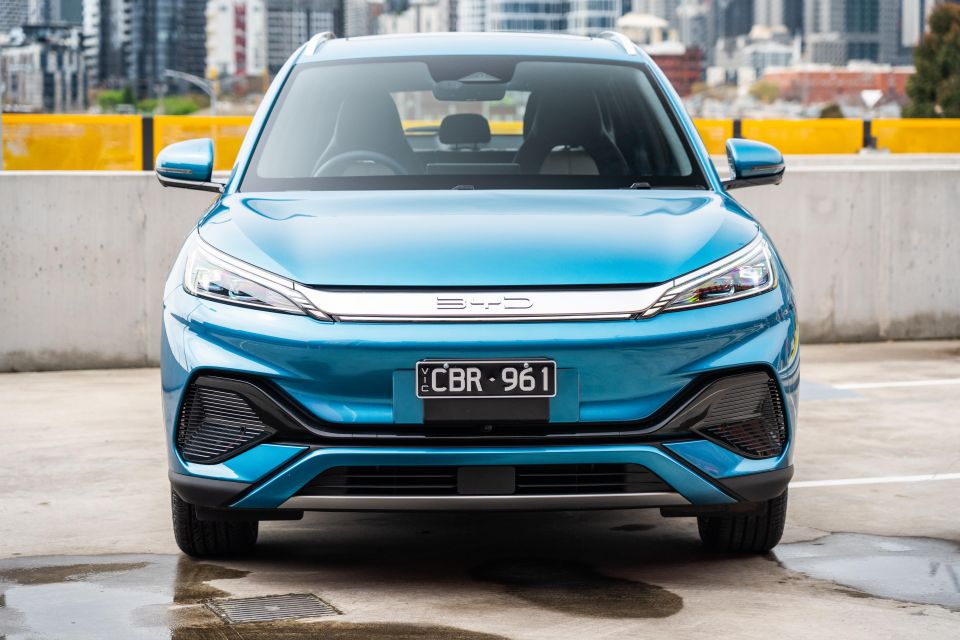
The BYD Atto 3 we are testing here is the Extended Range priced at $47,381 before on-road costs.
The drive-away price varies by region, being as low as $48,047 on the road in the Australian Capital Territory and as high as $51,343 in Western Australia – due to different tax schemes.
There will soon be a $3000 cheaper ($44,381 plus on-road costs) BYD Atto 3 Standard Range model to buy as well.
The pricing structure for the MG ZS EV is simpler. The range kicks off at $44,990 drive-away for the Excite grade tested here, regardless of where you live.
This climbs to $48,990 drive-away for the Essence grade that has some more luxury features but no more range or power.
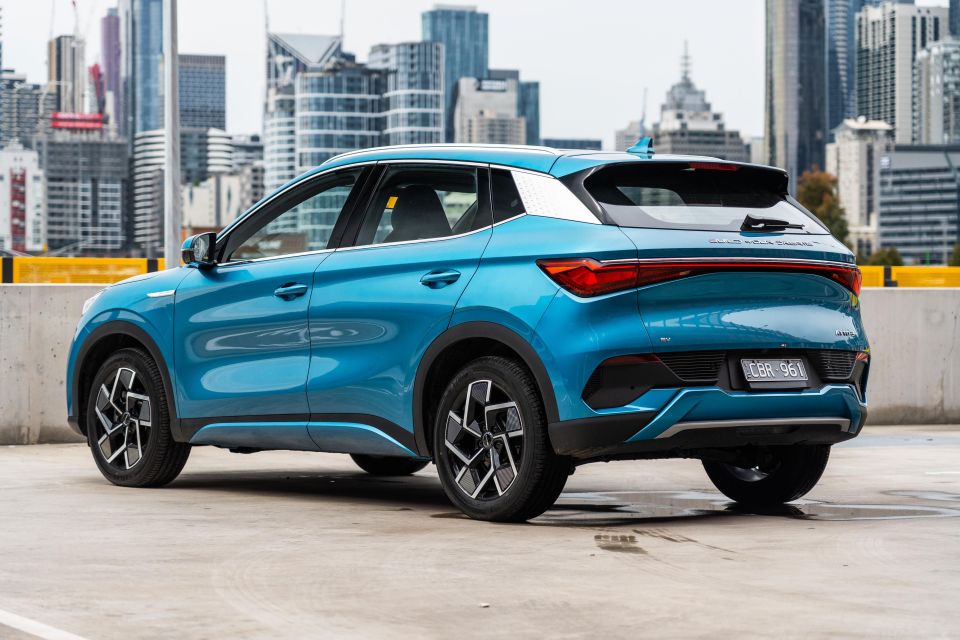
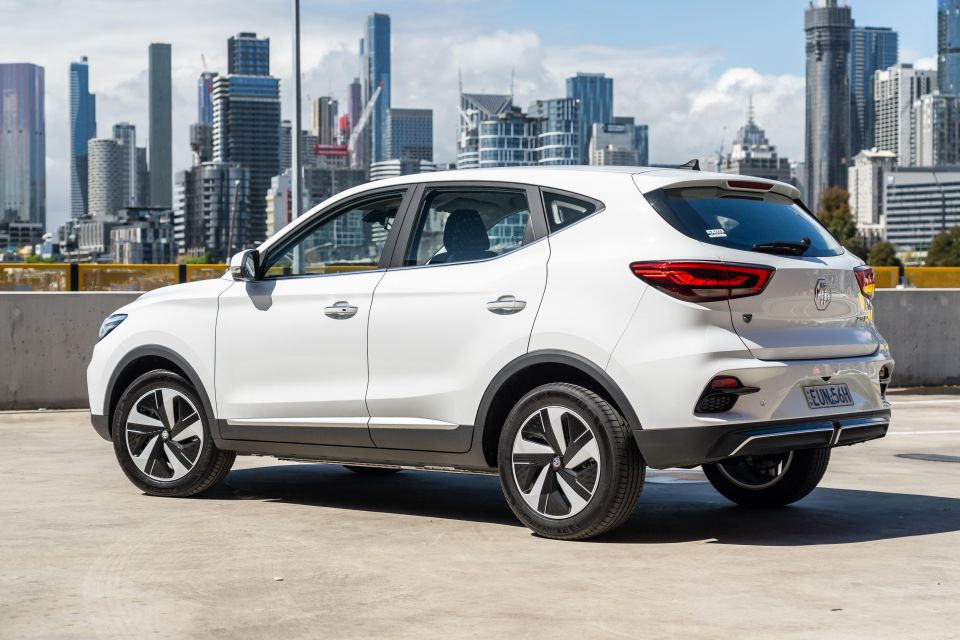

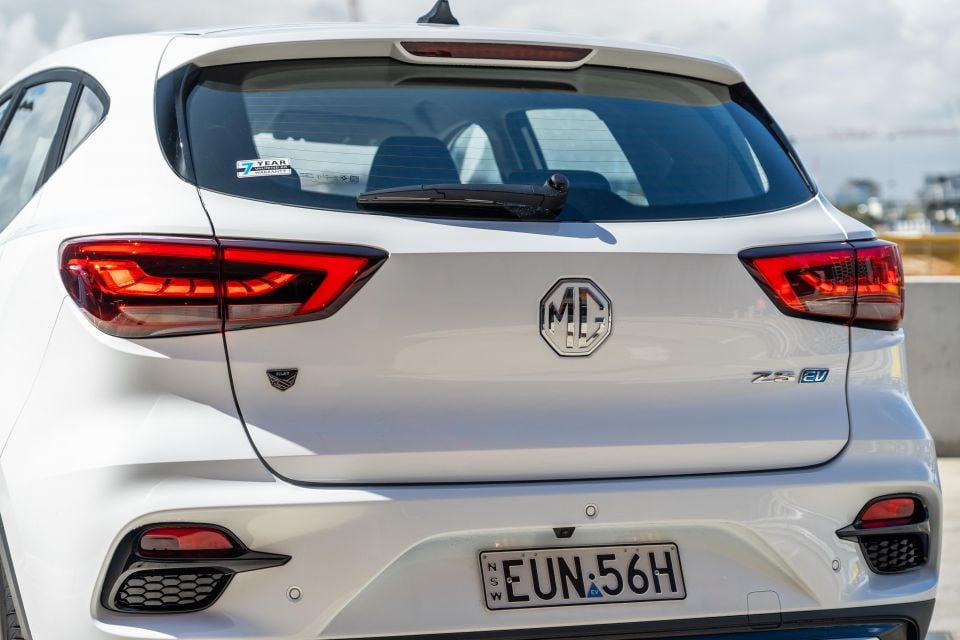
Prices as tested:
You should also remember that all Australian states and territories offer some form of EV incentives, from tax cuts to direct rebates worth up to $3500.
MORE: What electric car buyer incentives are offered across Australia?
Potentially better-known products include the Nissan Leaf that kicks off at $53,500 drive-away, and the Hyundai Kona Electric which starts at $59,400 on the road.
They also line up directly against hybrid SUVs such as the mid-range Toyota Corolla Cross GXL 2WD Hybrid ($44,600), and Honda HR-V e:HEV L ($47,000).
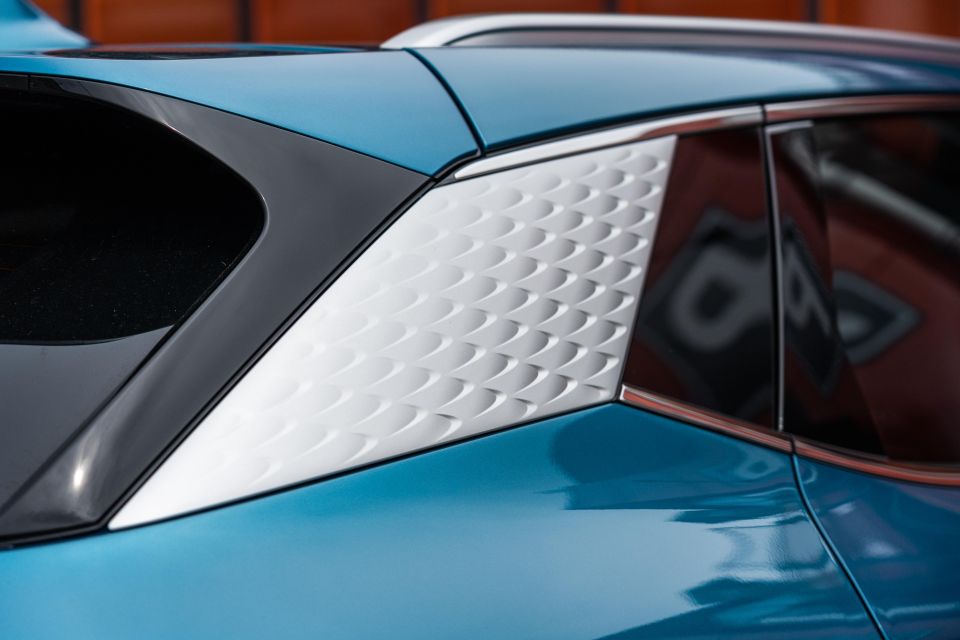
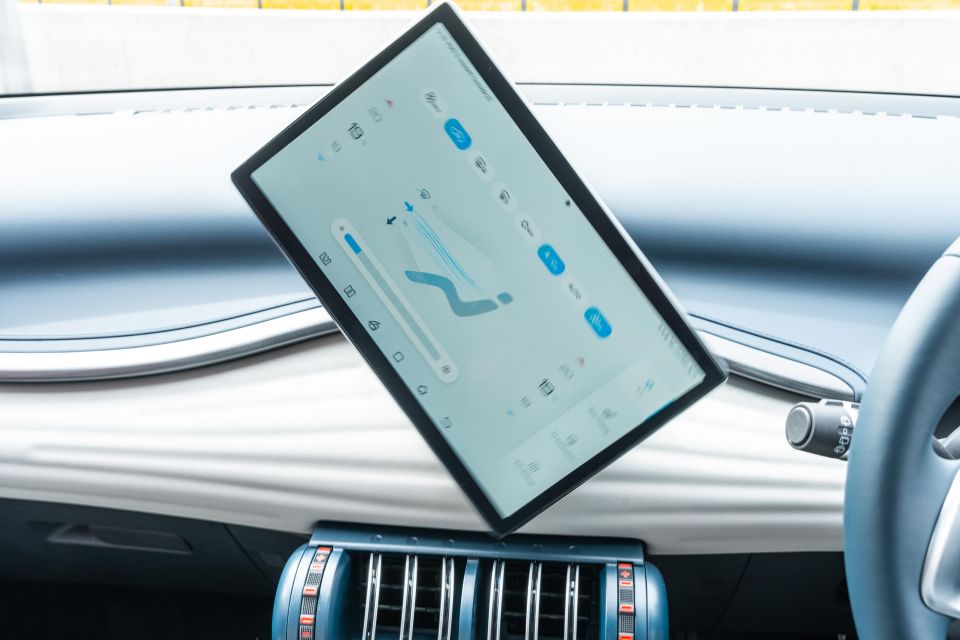
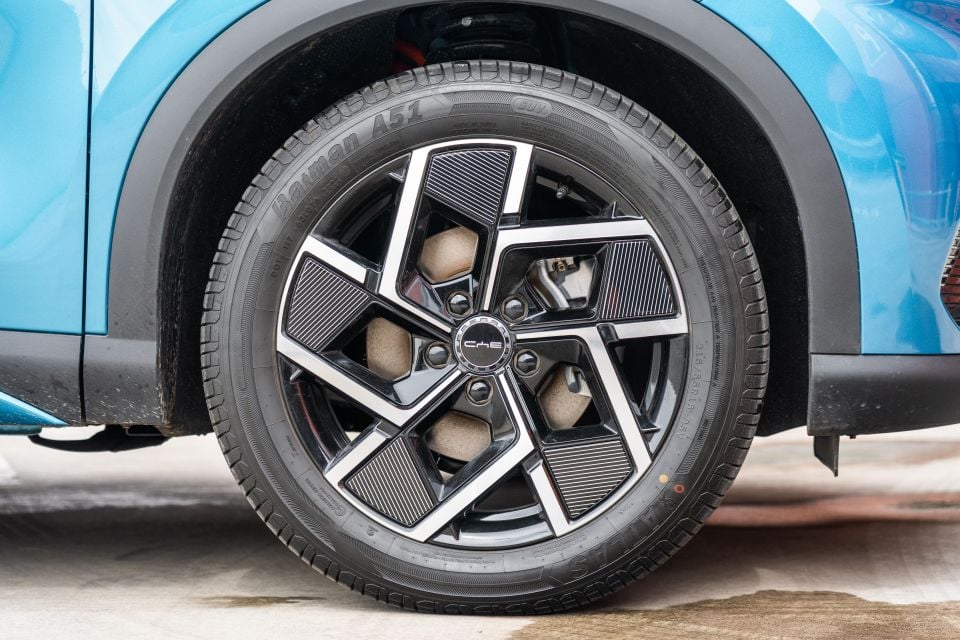

The BYD costs a few grand more than the MG as tested, but offers more features too.
These include bigger wheels, a glass roof, roof rails, powered tailgate, synthetic leather trim, powered and heated front seats, a wireless phone charger, eight-speaker audio, a drive recorder, and a voice assistant.
The table below outlines the MG’s spec as tested (MG ZS EV Excite), but also lists features that come in the $4000 more expensive MG ZS Essence grade, for fairness.
| BYD Atto 3 | MG ZS EV | |
|---|---|---|
| Wheels | 18-inch alloy | 17-inch alloy |
| Spare tyre | Tyre repair kit | Tyre repair kit |
| V2L compatibility | Standard | Standard |
| Keyless entry | Standard | Standard |
| Headlights | LED | LED |
| Daytime running lights | LED | LED |
| Panoramic sunroof | Standard | Essence only |
| Roof rails | Standard | Essence only |
| Power-folding side mirrors | Standard | Essence only |
| Powered tailgate | Standard | No |
| BYD Atto 3 | MG ZS EV | |
| Seat trim | Synthetic leather | Fabric (Excite), synthetic leather (Essence) |
| Powered and heated seats | Standard | Essence only |
| Digital instrument cluster | Standard | Standard |
| Climate control | Standard | Standard |
| Wireless phone charger | Standard | Essence only |
| Touchscreen size | 12.8-inch | 10.1-inch |
| Satellite-navigation | Standard | Standard |
| Sound system | 8-speaker | 4-speaker (Excite), 6-speaker (Essence) |
| Apple CarPlay | Coming OTA | Standard |
| Android Auto | Coming OTA | Standard |
| Radio bands | FM and DAB+ | FM and DAB+ |
| Bluetooth | Phone and media | Phone and media |
| Camera view | 360-degree | 360-degree |
| Drive recorder | Standard | No |
| Voice assistant | Standard | No |
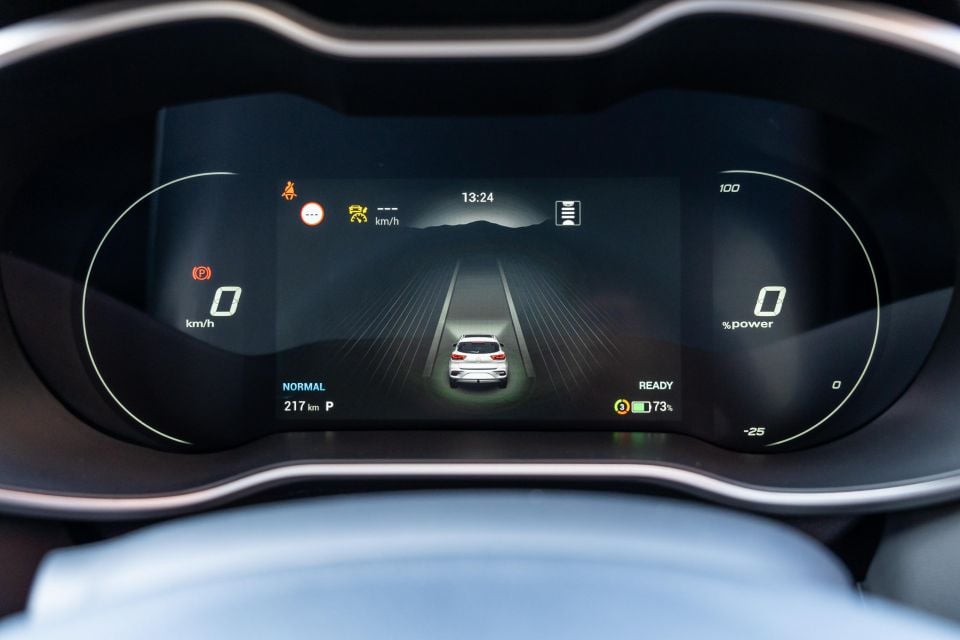
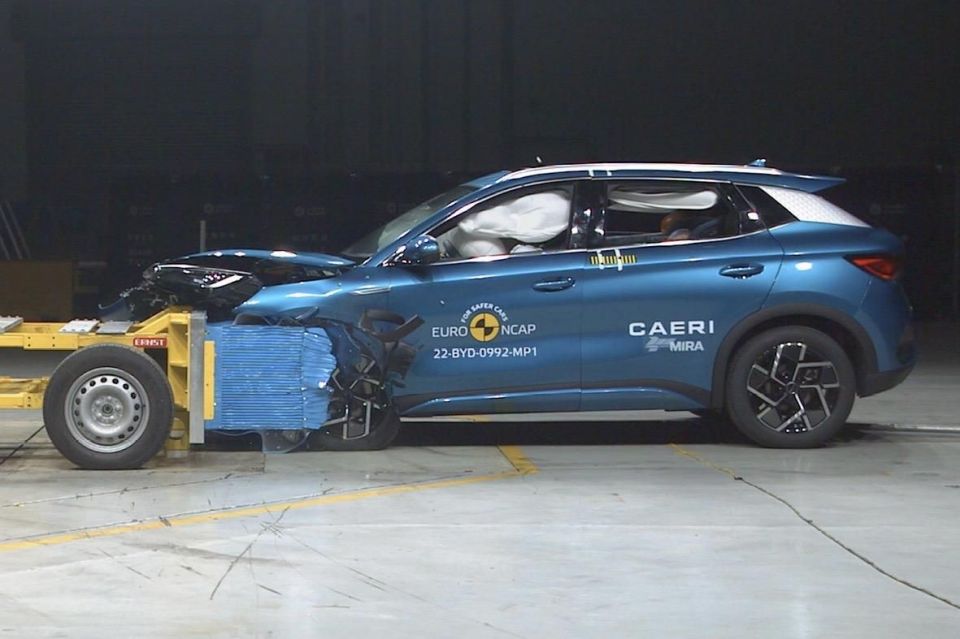
Neither of these cars carry current ANCAP safety ratings, for two different yet strange reasons.
The pre-facelift MG ZS EV was tested by ANCAP in 2019 where it scored five stars. However, this rating did not carry over to the new model. MG told us it is currently working with ANCAP to deliver an updated rating.
The BYD Atto 3 achieved five stars in recent NCAP testing for New Zealand and Europe, but has not received Australian ANCAP signoff yet – understood to be due to the lack of an easily accessible centre-rear child-seat top tether, which is causing an issue with ADR certification.
The Australian importer for BYD recently sent an “urgent notification” to customers advising them not to fit child restraints to the middle-rear seat of the Atto 3 EV for the time being.
At the time of writing, deliveries had been paused for a week – but the company expects to resume shortly. This should not at this stage affect anyone reading this and looking to order.
The BYD offers more safety features such as a centre airbag, more advanced lane-keeping aid, and standard rear cross-traffic assist and blind-spot monitoring.
| BYD Atto 3 | MG ZS EV | |
|---|---|---|
| Airbags | 7 (inc. front-centre) | 6 (no front-centre) |
| Adaptive cruise control | Standard | Standard |
| AEB | Standard | Standard |
| Blind-spot monitoring | Standard | Essence only |
| Lane-keeping system | Lane keep assist | Lane departure alert |
| Rear cross-traffic alert | Standard, with braking | Essence only |
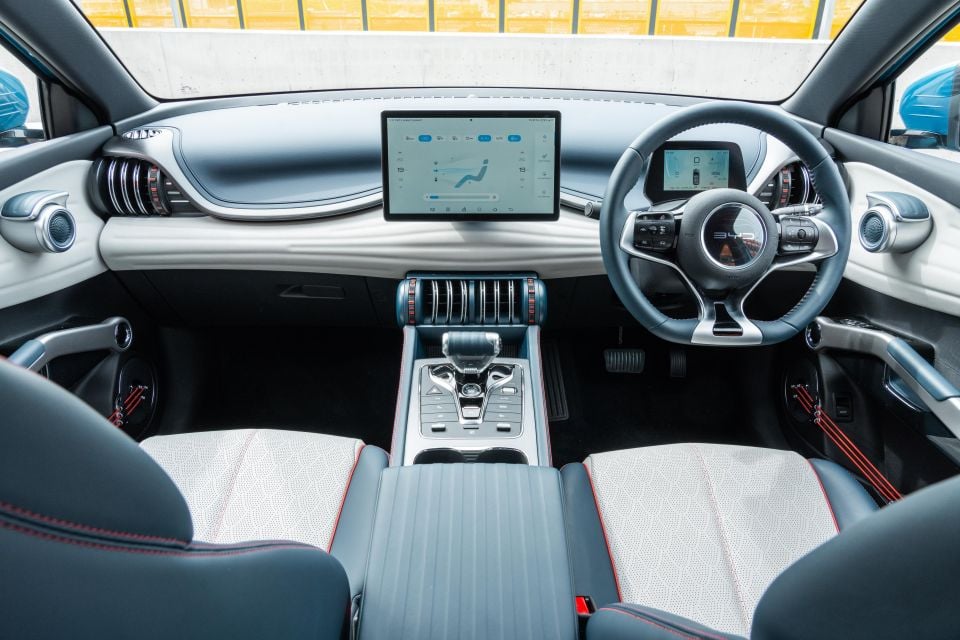
BYD
The blue, cream and red colour scheme brings a real point of difference which – love or hate – stands apart from the drab grey and black cabins we’re used to seeing.
There are brash LED light signatures that pop at night, and a big panoramic glass sunroof with powered cover that really lightens the interior up.
Enter with an open mind and you’ll be impressed, with the first observation being the reassuringly heavy ‘thunk’ from the door as it shuts you in.
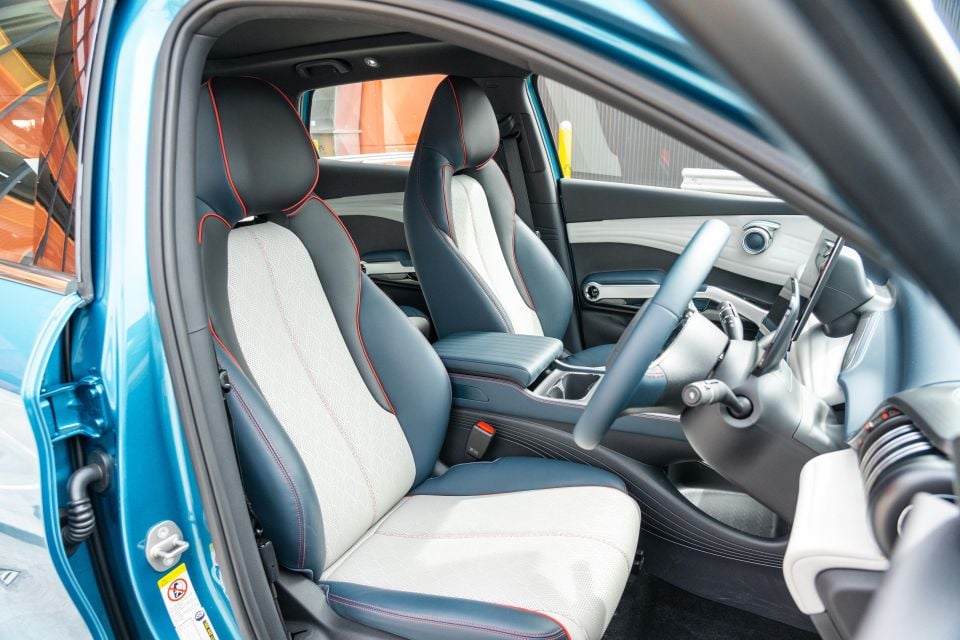
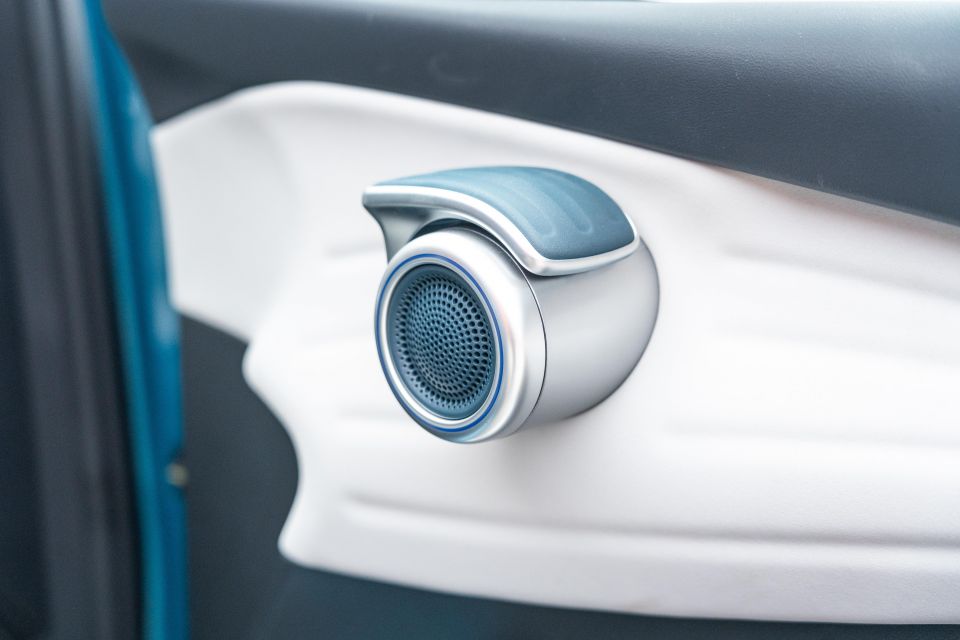
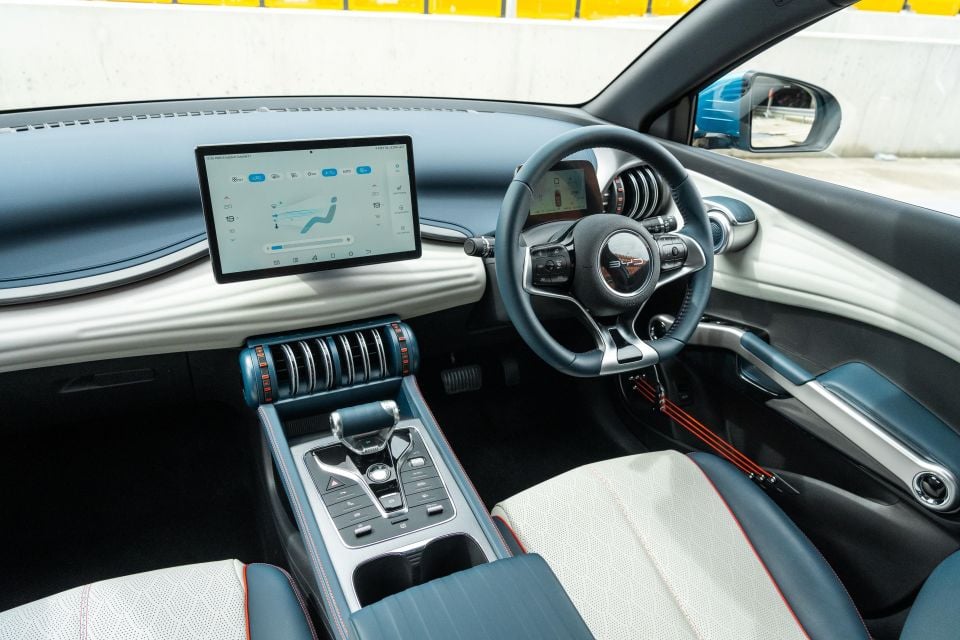
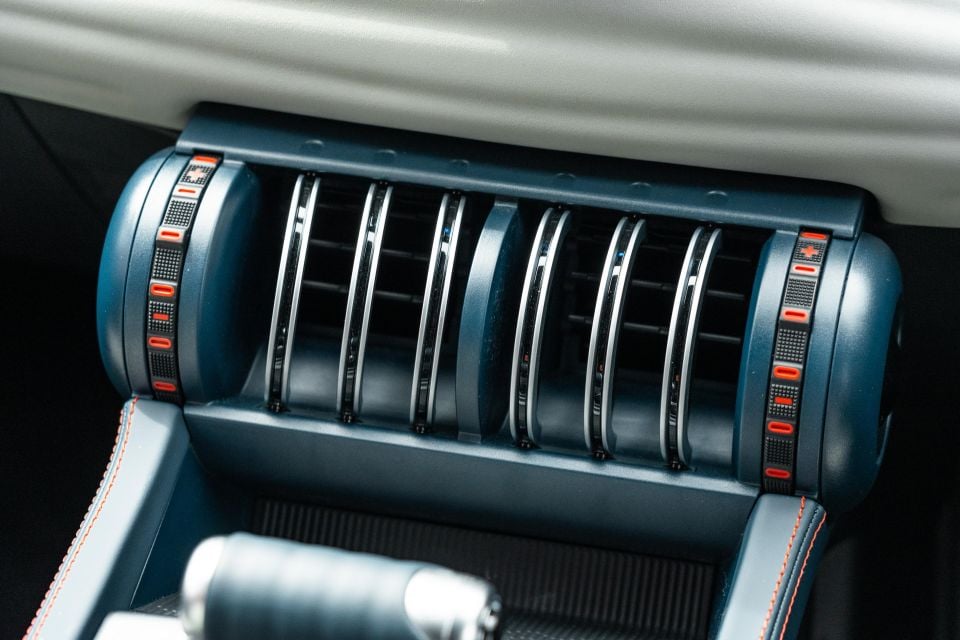
Build and material quality is good: there are padded surfaces on the doors and dash; the centre tunnel, pull-back circular door handles and console lid feel sturdy; and even those odd cylindrical lower vents click and clack into place decisively.
The power-adjustable and heated (through the touchscreen) seats are trimmed in good quality, soft, and perforated synthetic leather trim coloured blue and cream with red piping – although the fixed headrest supported my shoulders more than it did my neck.
The steering wheel adjusts for rake and reach, unlike the MG, and is trimmed in blue leather. There are simple buttons on each spoke for active cruise control functions and audio controls, with a fun little roller ball for volume controls.
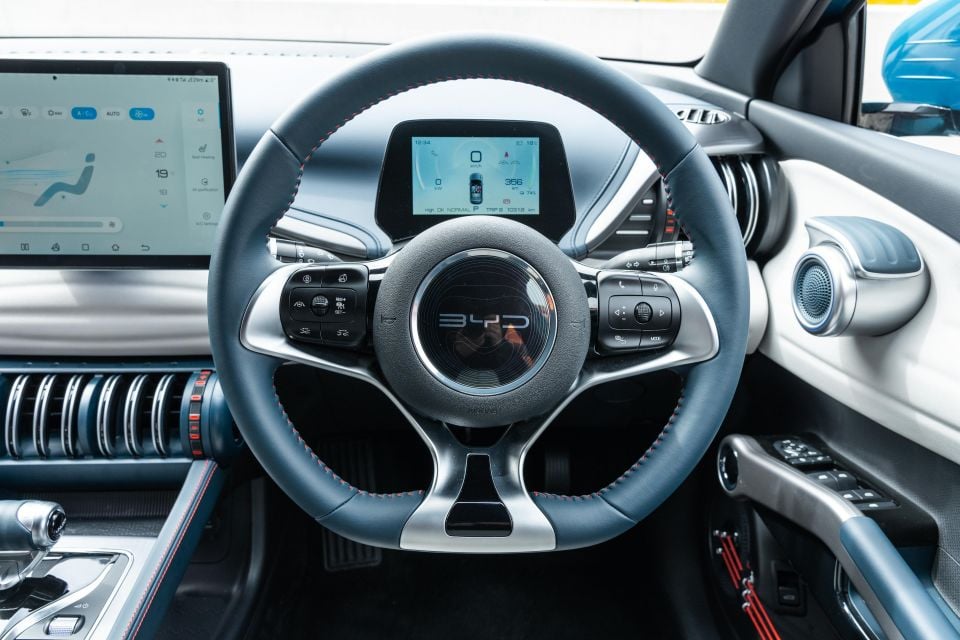
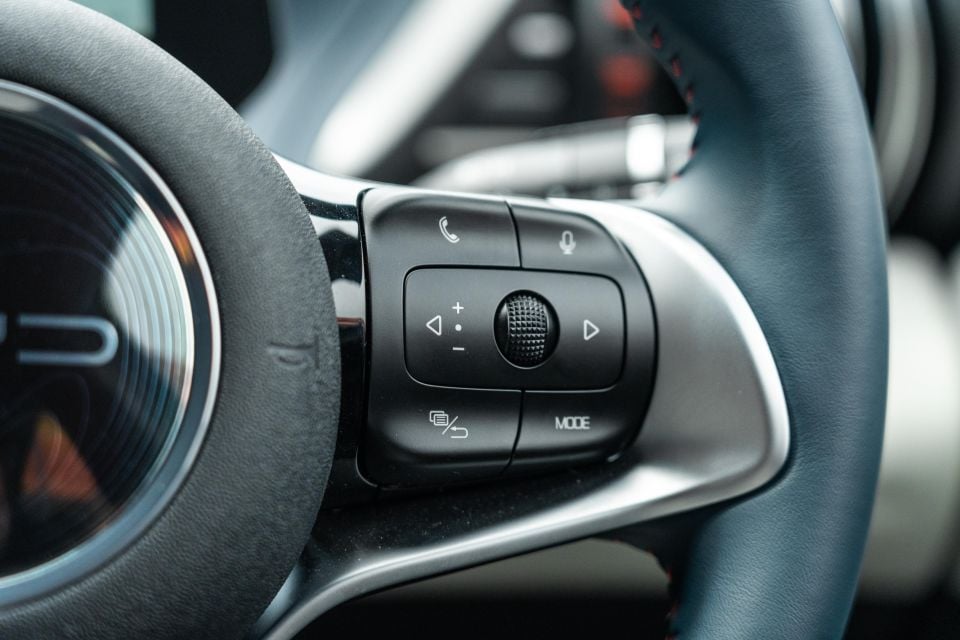
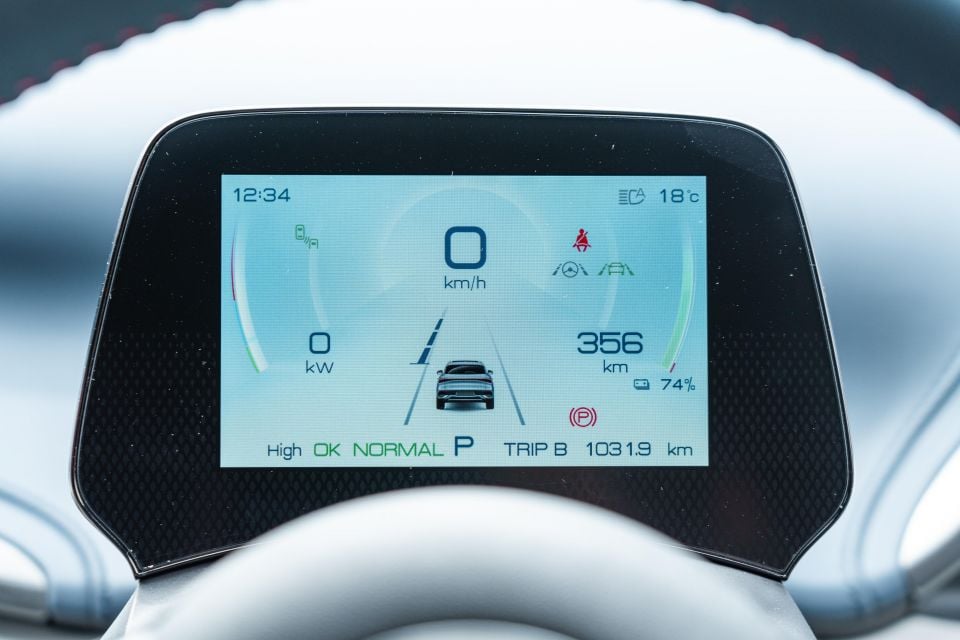
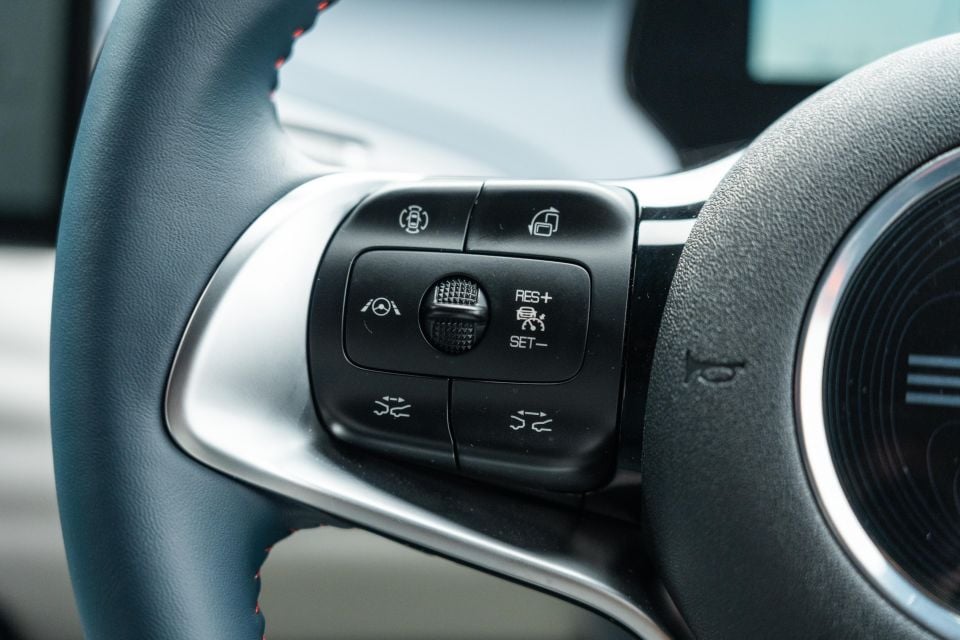
It’s worth noting that BYD went to the trouble of moving the indicator to the right-hand side of the steering column.
In place of a traditional cluster is a screen perched atop the column which I found perfectly legible. It shows your speed digitally, remaining range, tyre pressures, current power usage or rate of recuperation, lane-assist function, and active cruise control settings.
Moving down to the centre tunnel, there’s a gear shifter that looks to be inspired by a plane’s thrust lever. Behind this is a stylish starter button, knurled roller dial for audio volume, and a bank of Audi-aping buttons assisted by rocker switches.
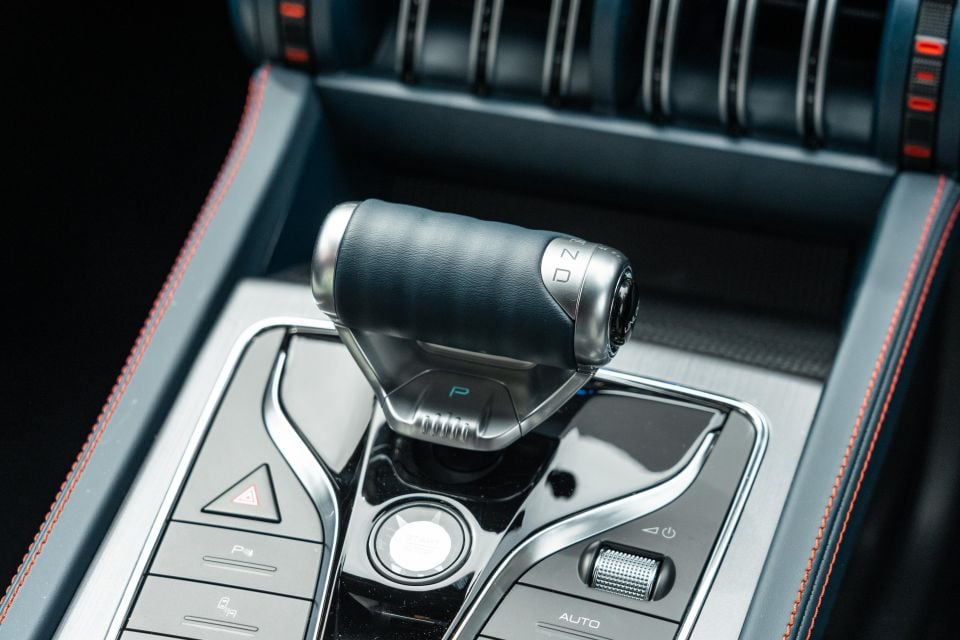
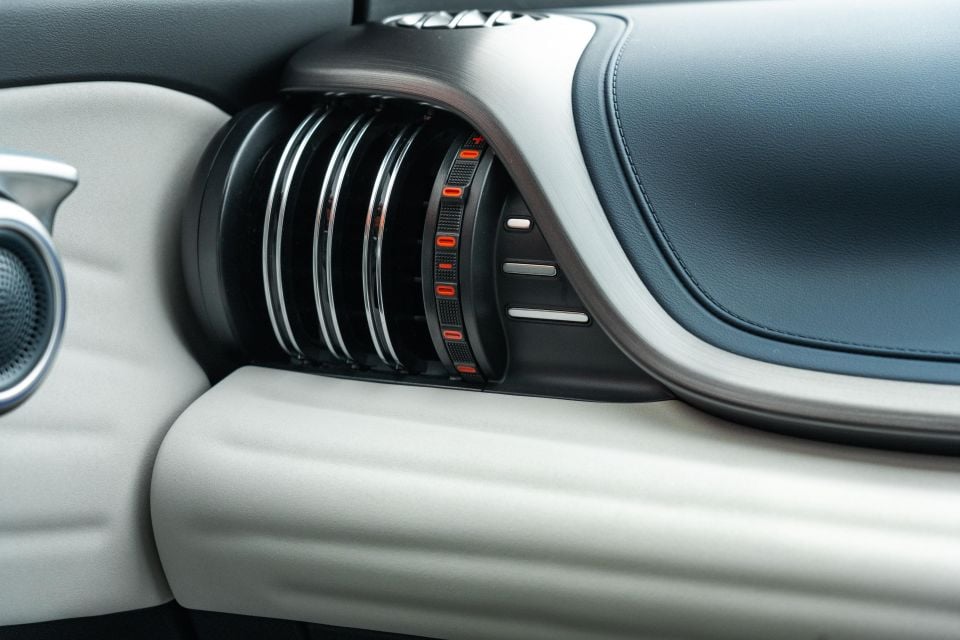

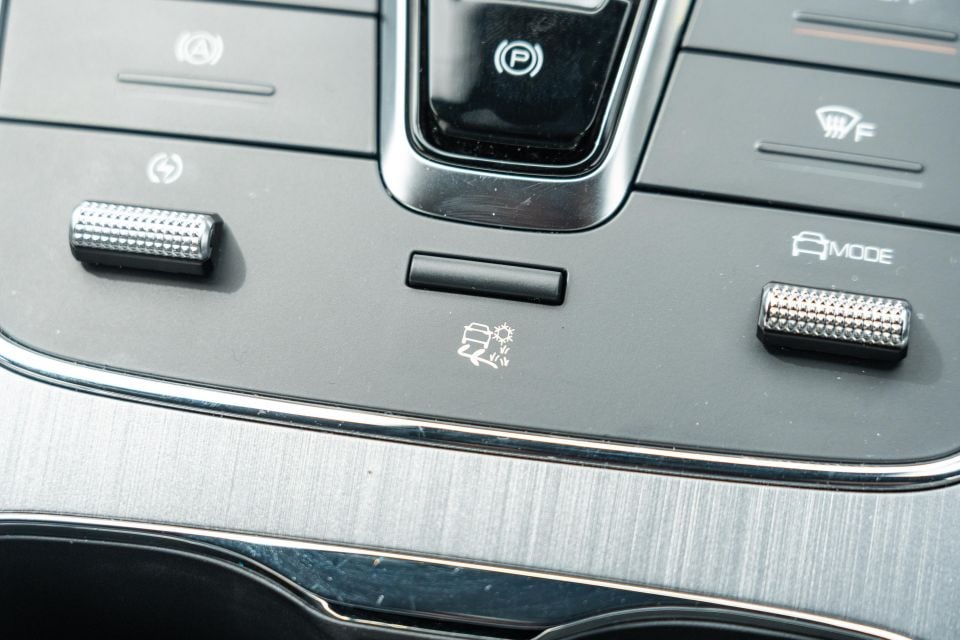
Functions able to be controlled or adjusted here include the parking sensors, blind-spot monitoring, Auto Hold, air-conditioning on/off, windscreen defogger, accelerator and steering weight modes, and the degree of brake-energy recuperation.
One standout feature is the Android-powered touchscreen, which measures 12.8 inches and offers fantastic clarity and quick processing of inputs with almost no lag. As a party trick, it also spins 90-degrees with a button on the wheel so you can view maps in portrait.
One small note: In portrait mode the spinning screen becomes invisible when you are wearing polarised sunnies.
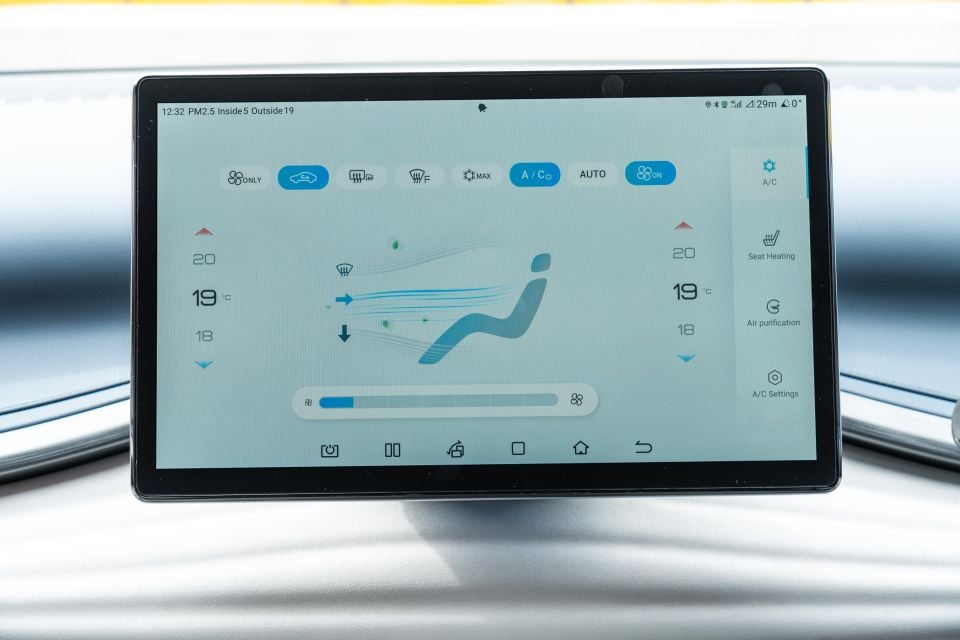
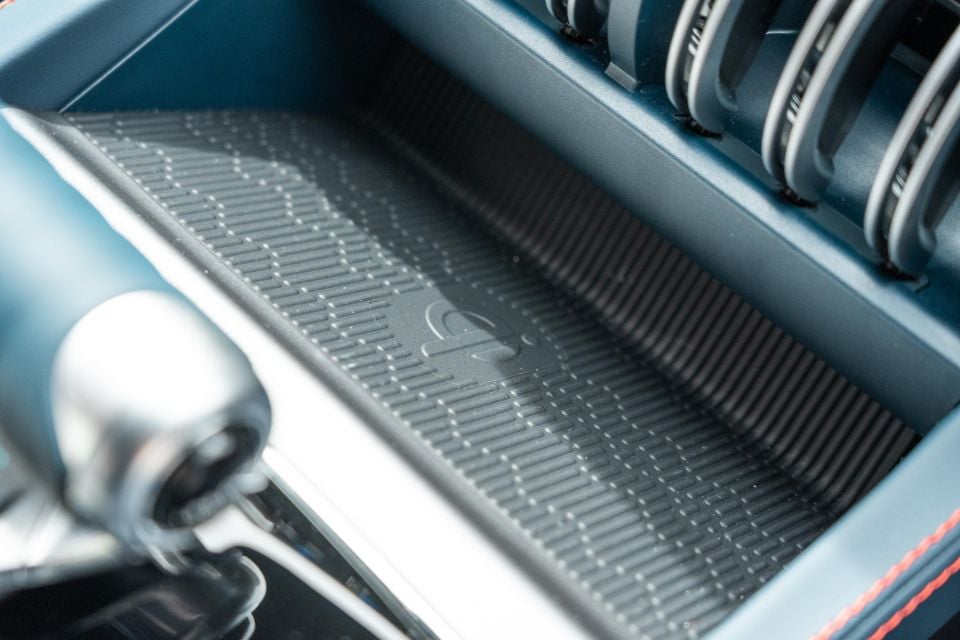
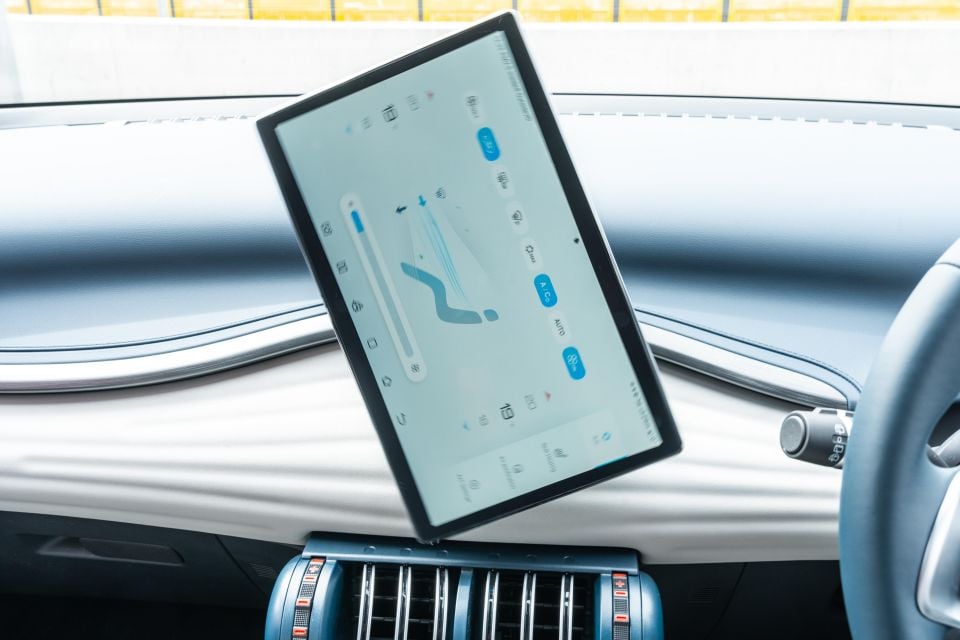
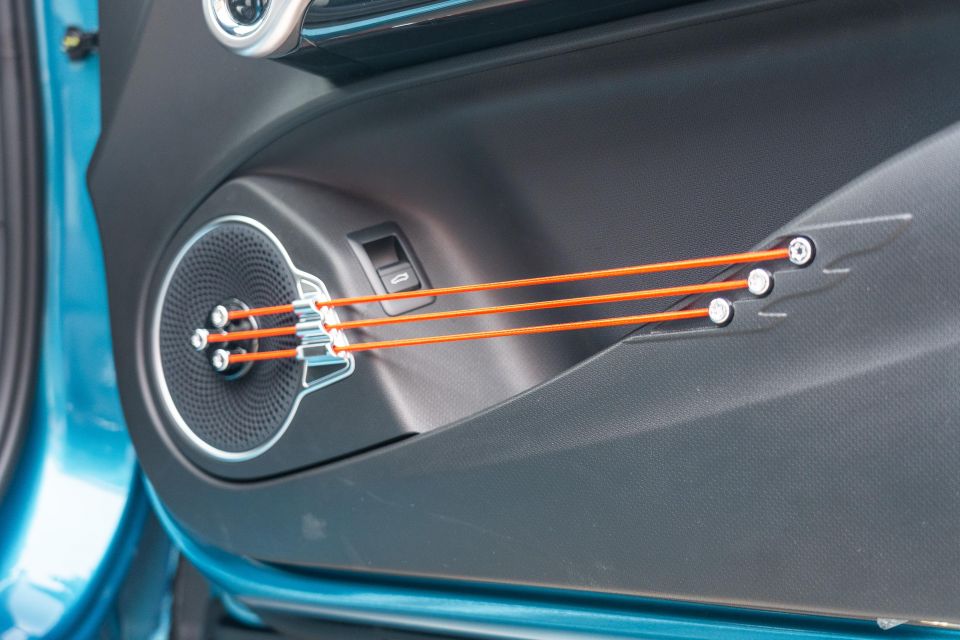
Sat-nav was not available when we picked the car up, but lo and behold an over-the-air (OTA) software update added sharp embedded mapping a few days later, alongside Spotify integration and conversational voice controls for myriad functions.
The system updates are just like downloading a new version of iOS. Thankfully, Apple CarPlay and Android Auto – not yet available – are also expected to become available via OTA in the fourth quarter of this year.
You get USB-C and USB-A points, Bluetooth streaming and audio that re-paired rapidly, and a digital radio (DAB) receiver. Other highlights include the sharp 360-degree cameras with various angles, and the superior eight-speaker sound system from Dirac.
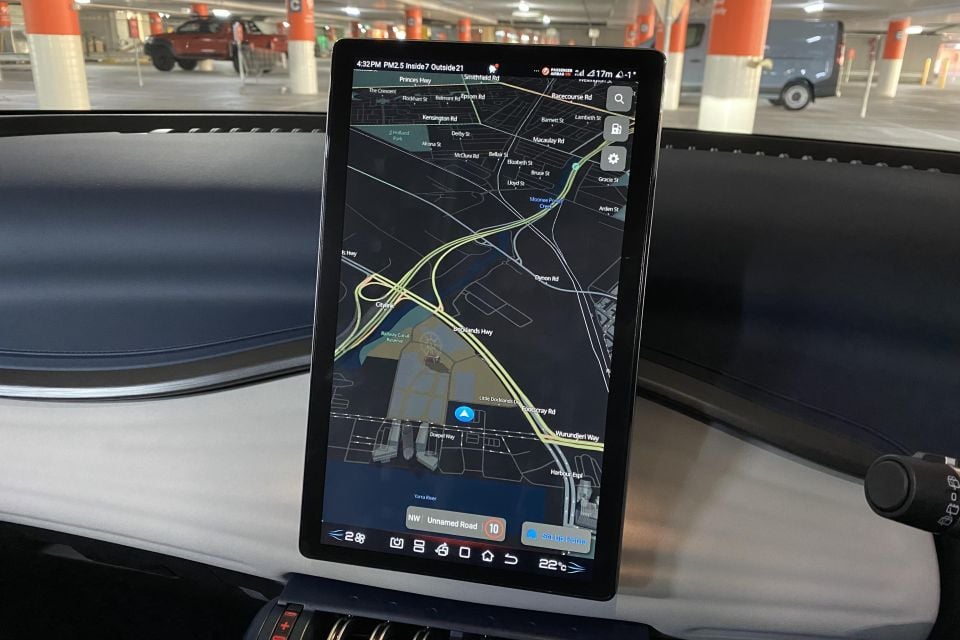
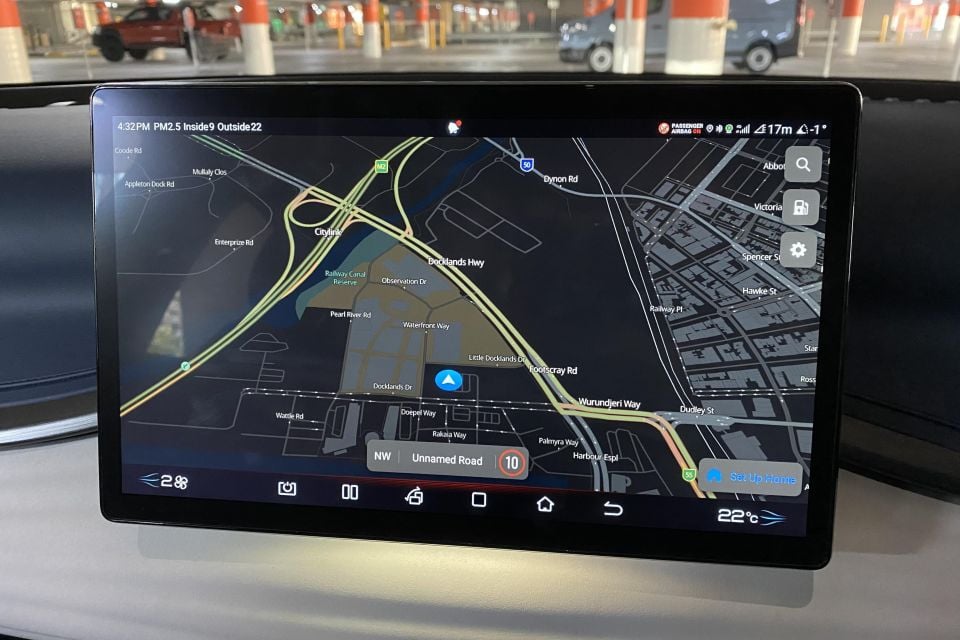
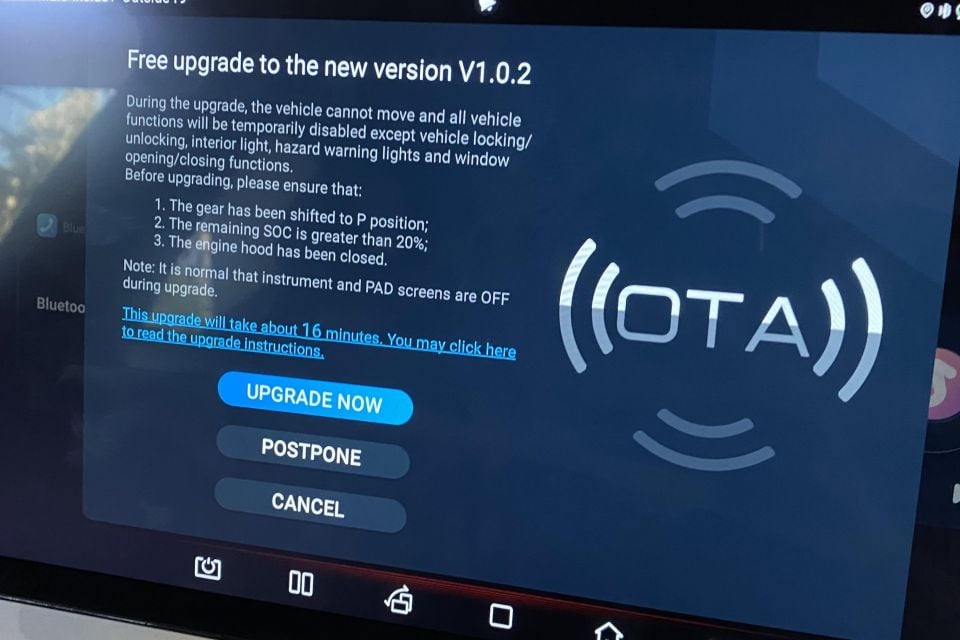

Our car also had an inbuilt forward-view driving recorder or dash cam that saves the last few trips, and places them in the touchscreen to view and – if needed – lock. This system also doubles as a forward-facing video and stills camera for some reason.
Storage options include the concealed section below the gear shifter which is helpfully backlit at night, a centre console deep enough for a big water bottle, and a decent glovebox. There’s also a rubbery wireless charger pad below the vents.
See those three elastic straps on each lower door section? They’re screw-mounted and taut enough to be played like a guitar string. I’m sure the novelty fades fast…
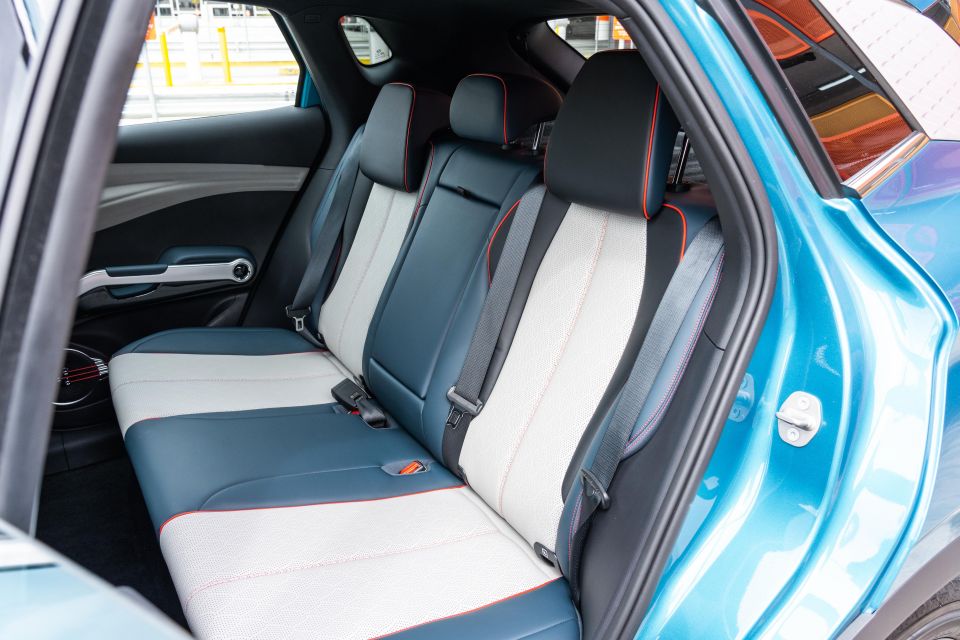
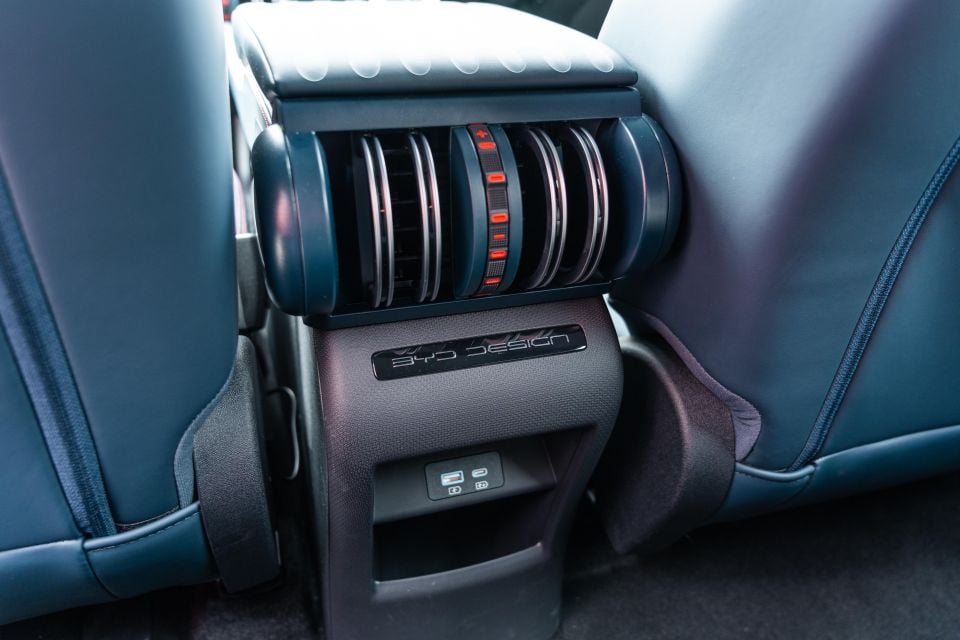

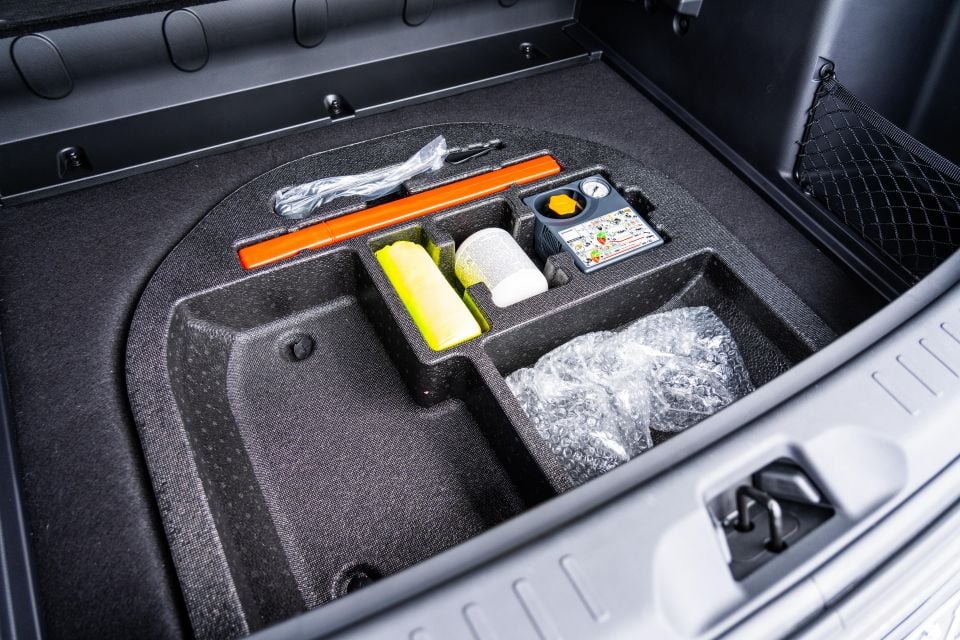
Those back seats are pretty good, with the good material mix maintained, sufficient legroom for my 194cm frame, and a totally flat floor enabled by BYD’s ‘e-Platform 3.0’ EV skateboard. That said, the sunroof does eat into headroom for taller occupants like myself.
Amenities include a flip-down armrest with cupholders, map pockets, top-tether and ISOFIX child-seat attachment points, rear air vents, and both USB-A and USB-C points. There is also more swish colourful LED lighting back there.
The tailgate is powered at the press of a button unlike the MG’s, and reveals a bigger 440-litre boot which expands to 1340L when you fold the back seats down. However the boot floor is quite high, and a large check-in suitcase will about max it out.
Below the boot floor you get a tyre repair kit rather than any sort of spare wheel.
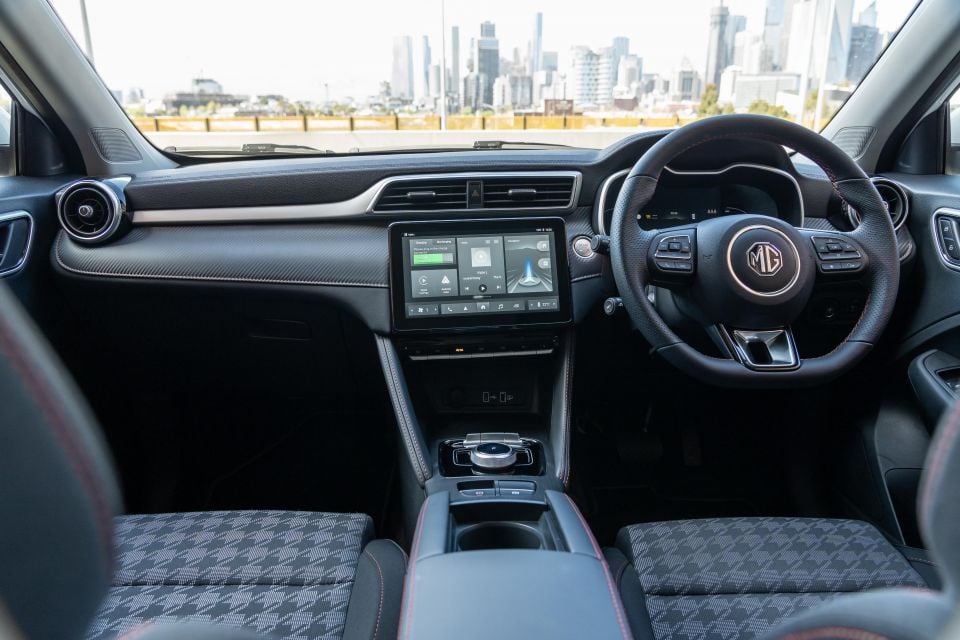
Where expert car reviews meet expert car buying – CarExpert gives you trusted advice, personalised service and real savings on your next new car.
MG
The updated model’s interior design is entirely conventional and won’t scare anyone making the switch, perhaps unlike the Atto 3. It’s built to a price, but generally acceptable, yet at the same time lacks the BYD’s premium feel.
This base model comes with manually-adjustable seats trimmed in funky fabric, offering pretty good thigh and side bolstering for support in corners. Step into the Essence and you get heated (up front) and synthetic leather seats instead.
The steering wheel looks great with red stitching and perforated hand grips, but it doesn’t feel all that premium and lacks the Atto 3’s telescopic reach adjustment – it only moves up and down.

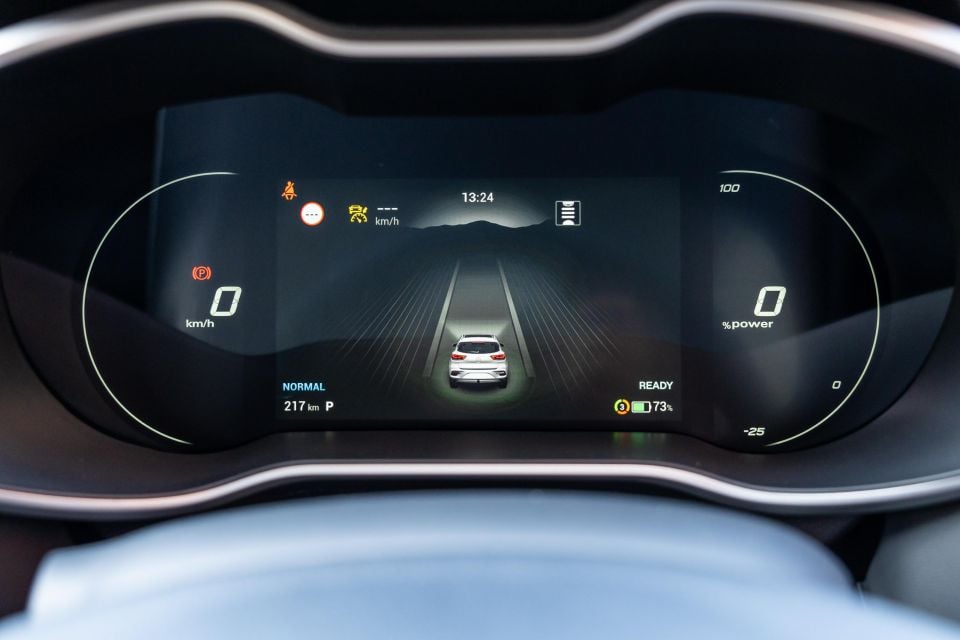
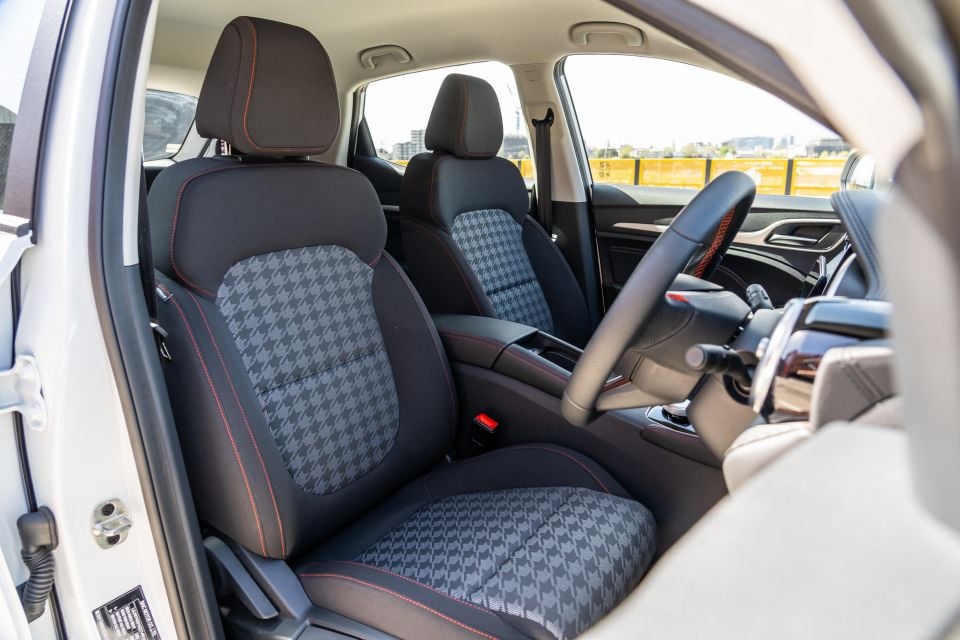
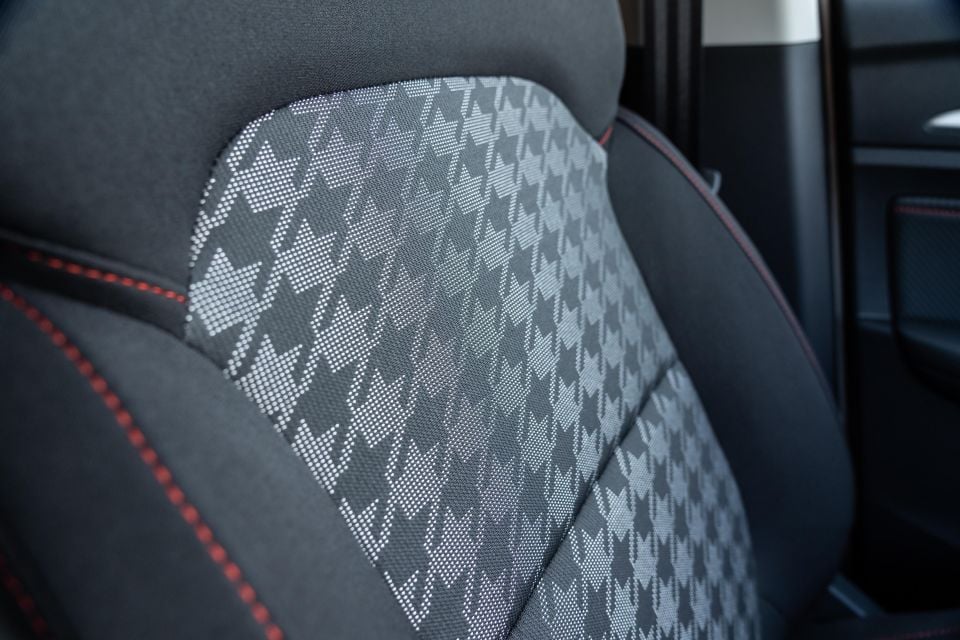
The bigger and brasher digital instrument cluster runs a speedo on the left and a power usage metre on the right, flanking a trip data readout.
The indicator stalk is on the left, while a lower stalk operates the adaptive cruise control – which in turn prompts the instruments to display a live animation of its workings.
The build quality feels fine, with few obvious squeaks or rattles on our test car – one exception being the small amount of movement in the steering column trim. But again it feels a little cheaper than its rival.
The upper door trims and lower part of the tunnel is covered in rock hard plastic, but the door and centre armrests, knee rests and dash are padded.
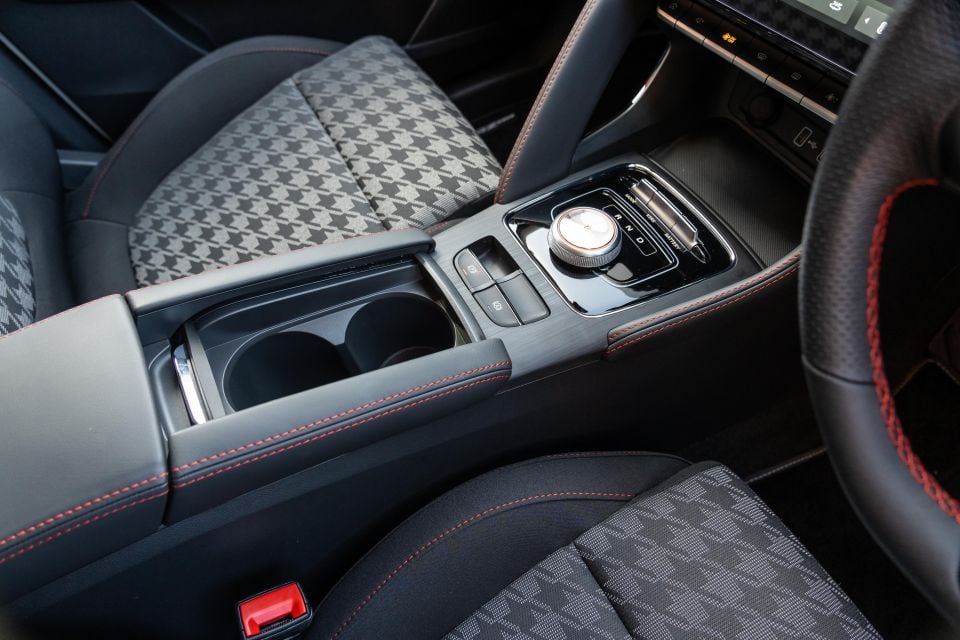
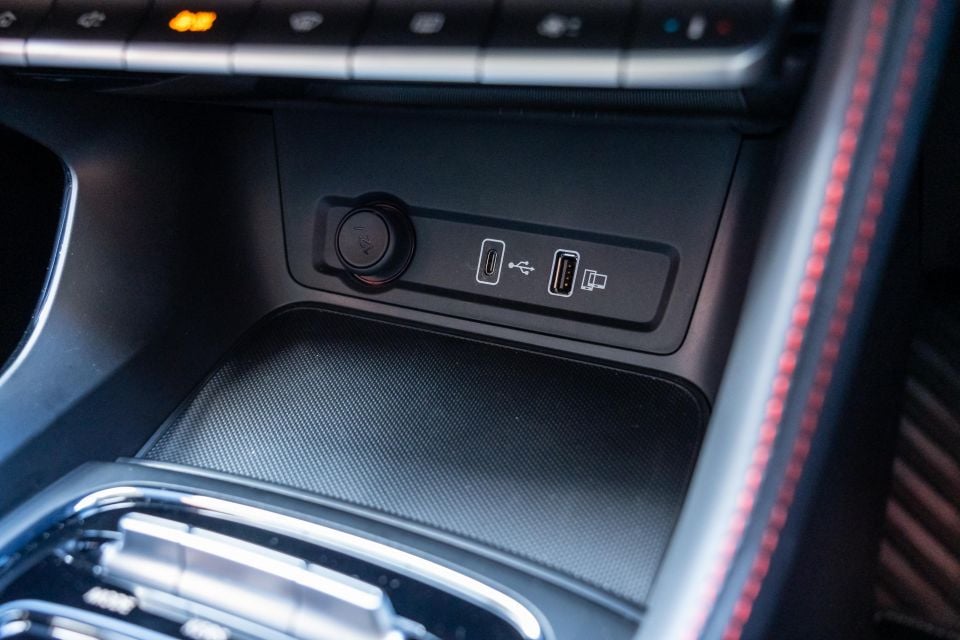
There’s an interesting padded material running the full width of the dash designed to vaguely resemble carbon-fibre, and the use of red stitchwork and silver plastic trims elevate the overall look and feel.
Next to your left knee sits a circular gear shifter that’s nicely knurled – left for reverse, right for drive, push for park – ahead of which are three rocker switches.
This switch bank controls the three levels of brake energy recuperation (KERS), driving mode (Sport, Eco, Normal), and shortcuts you to a battery status menu on the touchscreen.
Above this are physical buttons that shortcut you to the home screen menu, change the volume, operate the defogger, and change the climate control temperature.
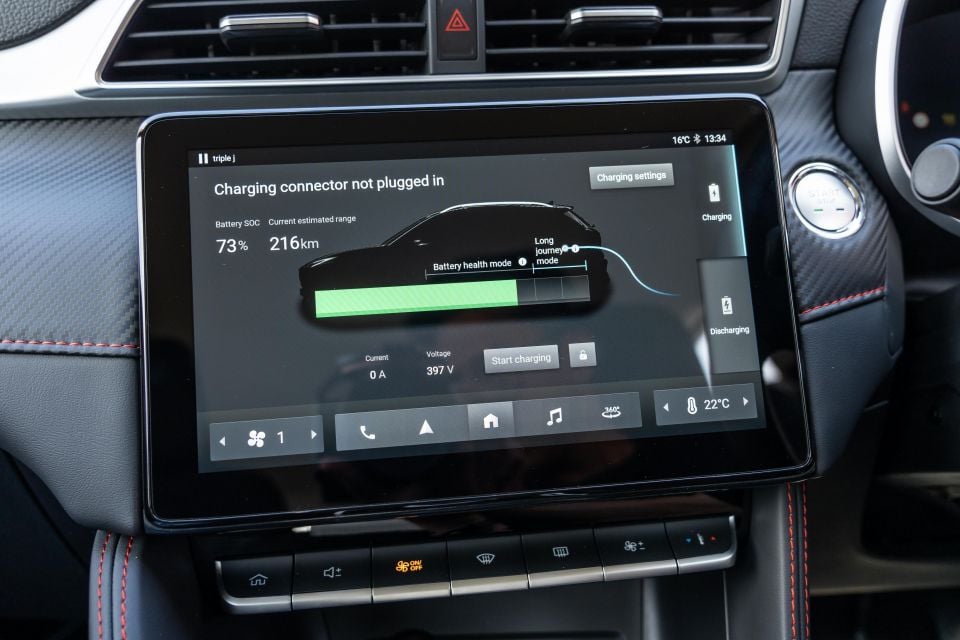
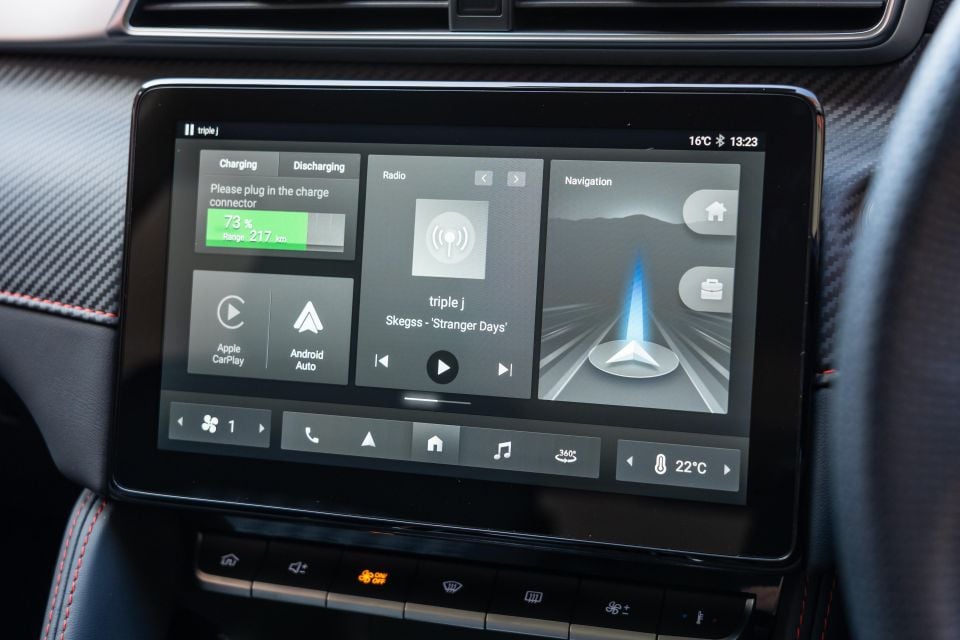
The new 10.1-inch touchscreen is far better than the old model’s, which was laggy and hard to see. It’s not the fastest-loading unit, but its pages are simple to work out, there’s a horizontal lower menu with shortcuts, and its graphics are fine.
That being said, it’s really not a patch on the BYD’s display.
It offers embedded sat-nav, wired Apple CarPlay and Android Auto, which run through the USB-A point rather than the also-fitted USB-C, and both FM and DAB.
The Bluetooth phone and media re-pairing was rapid and reliable, and I made numerous phone calls on the move with no reported issues.
While the 360-degree camera sounds good on paper, its resolution is pretty average. MG has clearly cut costs here.
Storage options include the small console, central cupholders with a sliding cover, mid-sized glovebox, and big door bins. There’s no hidden storage area below the centre tunnel like you find in many flatter-floor EVs.

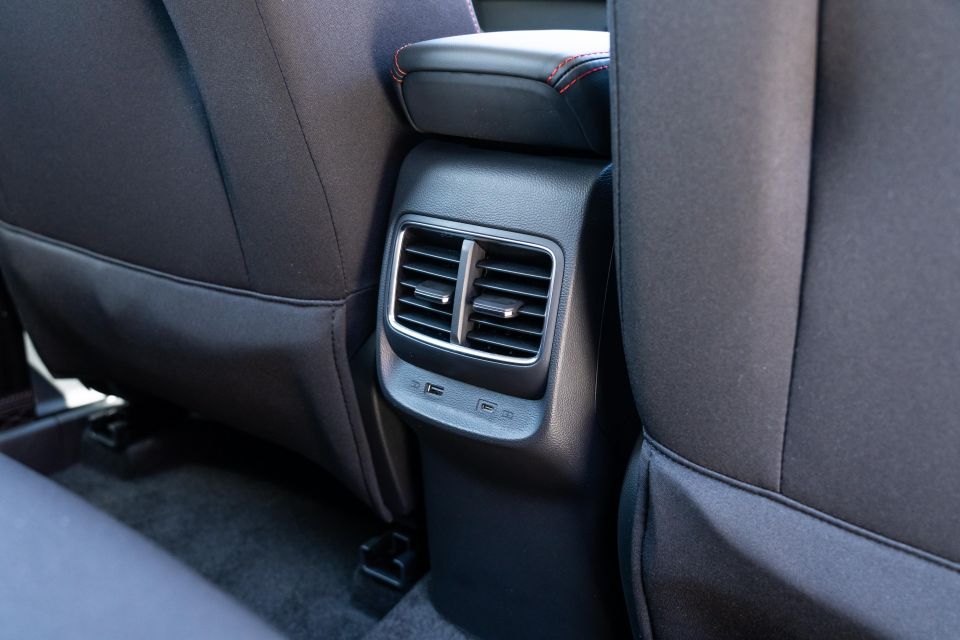
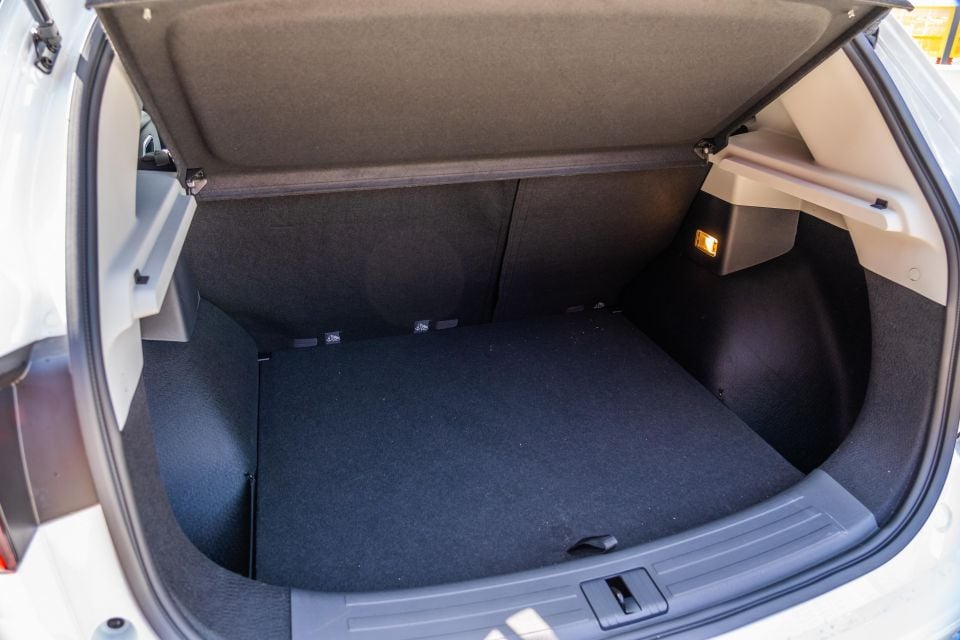
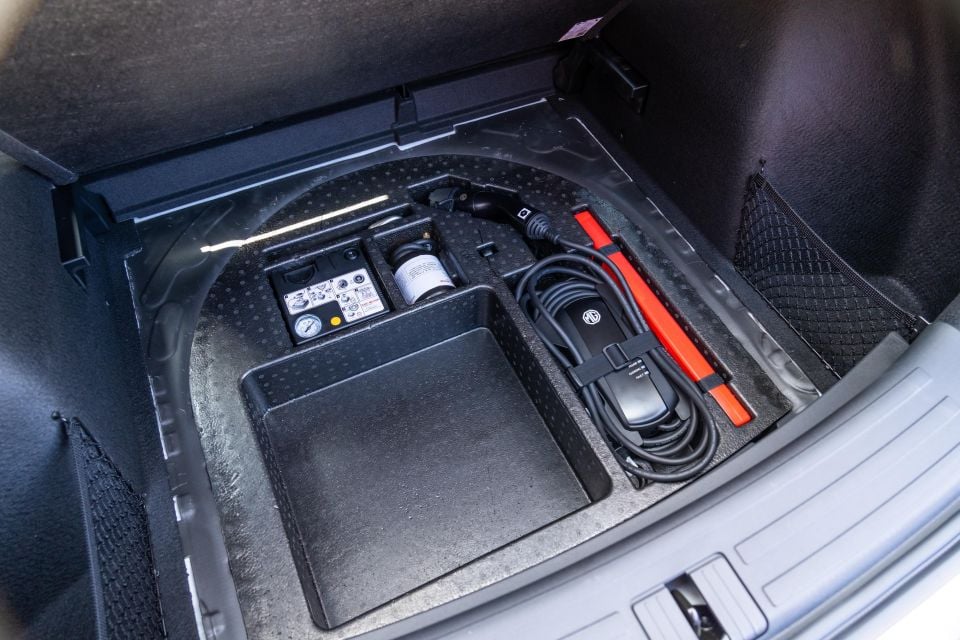
One strength is the back seat, with my 194cm frame finding plenty of leg and head space behind my preferred driving position. Therefore, you can carry four adults without a drama.
Back-seat amenities include air vents, one USB-A and one USB-C point adjustable headrests, damped folding grab handles, and ISOFIX/top-tether attachments.
There are door bins for bottles, but no flip-down armrest with rear cupholders.
The boot capacity is 359 litres, about the same as a typical hatchback, but there’s no spare tyre – just a repair kit.
| BYD Atto 3 | MG ZS EV | |
|---|---|---|
| Length | 4455mm | 4323mm |
| Width | 1875mm | 1809mm |
| Height | 1615mm | 1625mm |
| Wheelbase | 2720mm | 2585mm |
| Boot space | 440L | 359L |
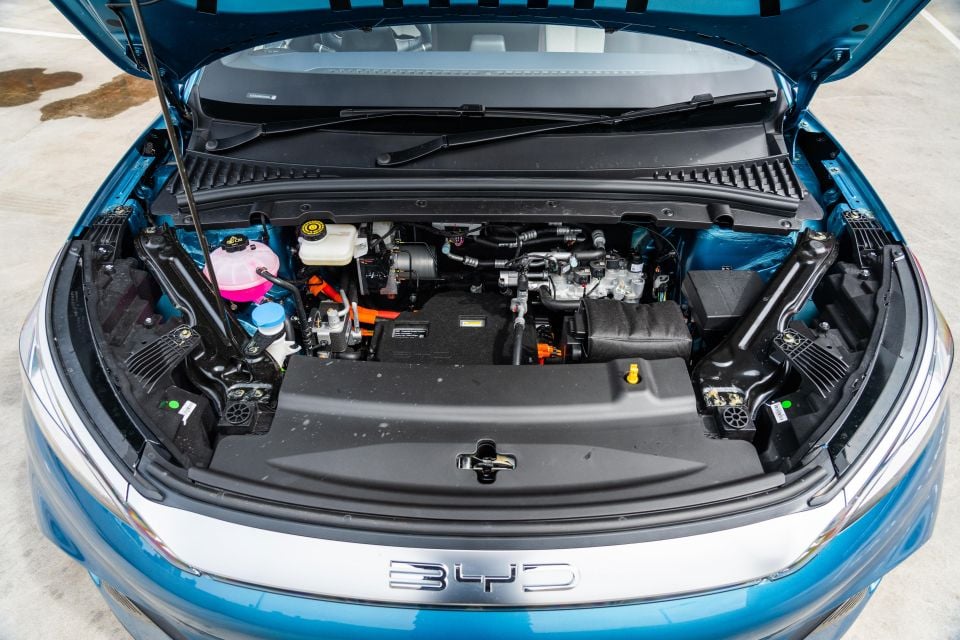
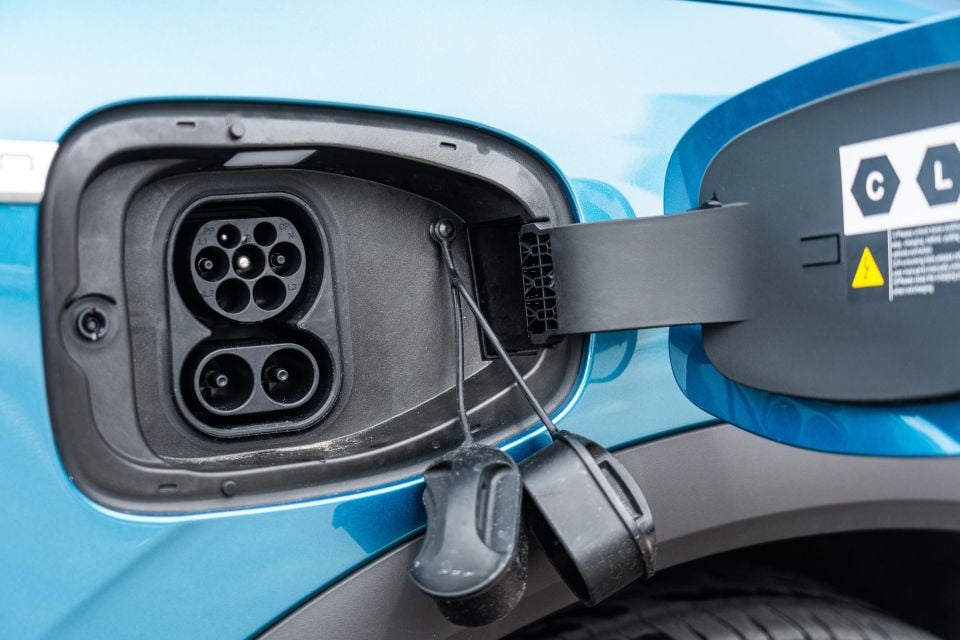
BYD
The Atto 3 is front-wheel drive and powered by a 150kW and 310Nm motor.
The motor in our Extended Range model is fed by a 60kWh ‘BYD Blade’ in-house battery using lithium iron phosphate chemistry with a distinct cell arrangement. The Blade battery aced the tough nail penetration test without igniting.
BYD claims the Atto 3 Extended Range offers a WLTP driving range of 420km per charge.
Note: Those who want the cheaper BYD Atto 3 Standard Range option can opt for a smaller 50kWh battery and save $3000, in exchange for about 65km less range.
BYD says it can be charged at 80kW on a DC charger (though I briefly saw 90kW indicated) but only 7kW AC.
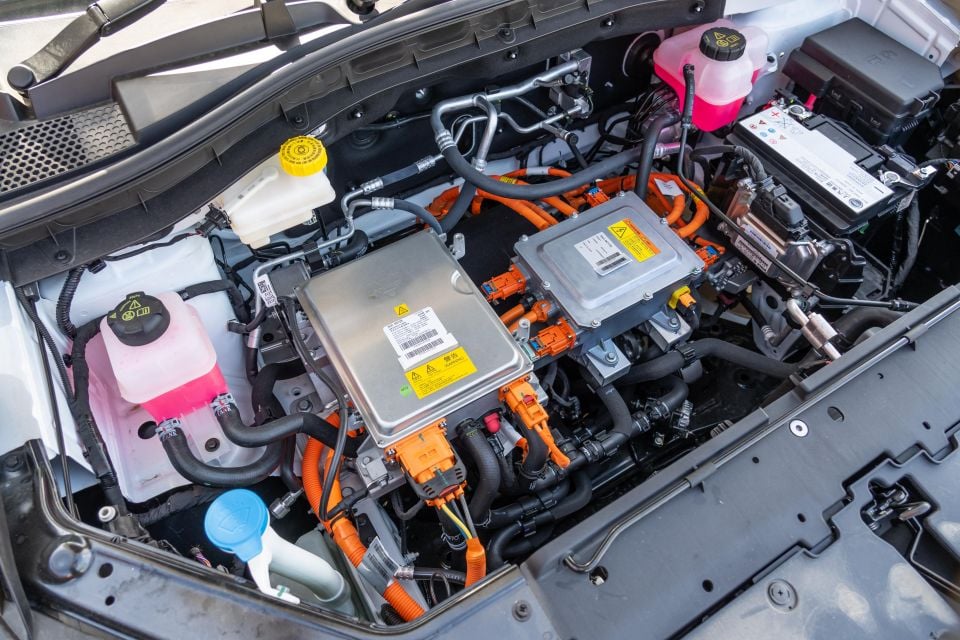
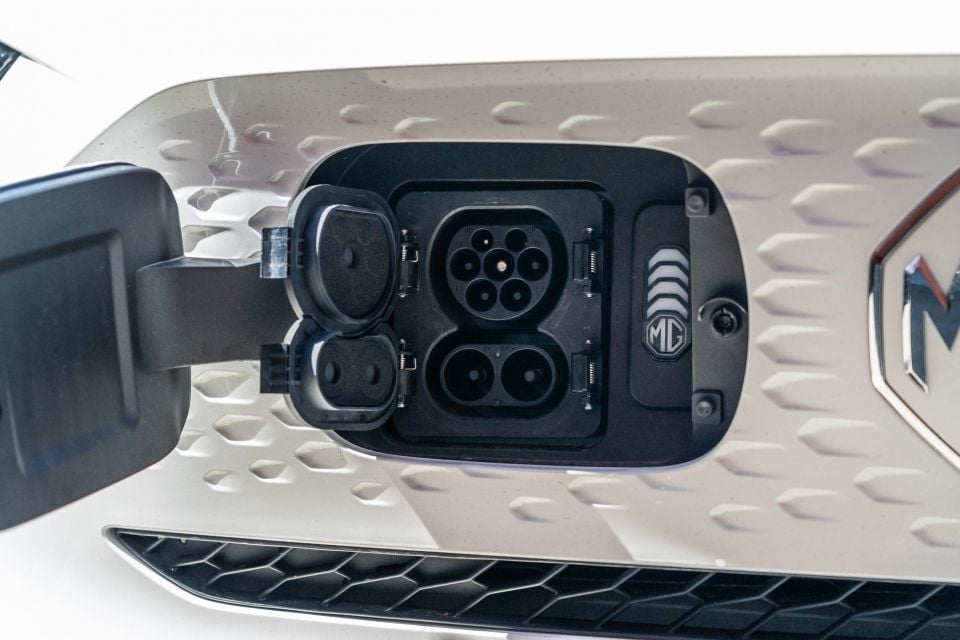
MG
The updated MG ZS EV gets a more powerful 130kW drive motor, compared to the pre-facelift’s 105kW, but torque has been pared back to 280Nm (down from 353Nm).
That’s not necessarily a bad thing, considering the MG ZS EV is front-wheel drive like the BYD, and too much going though the front axle can cause axle tramping and torque steering.
The motor is powered by a new, also lithium iron phosphate battery with 50.3kWh capacity, capable of providing a 320km driving range on the European WLTP testing cycle – up from 263km in the old car.
It can be charged at 75kW on a DC charger and up to 11kW AC.
Note: Both vehicles are capable of vehicle-to-load (V2L) to power appliances via an adaptor.
| BYD Atto 3 | MG ZS EV | |
|---|---|---|
| Battery capacity | 60.5kWh | 50.3kW |
| Battery type | Lithium iron phosphate | Lithium iron phosphate |
| WLTP range | 420km | 320km |
| Efficiency claim | 14.4-15.7 kWh per 100km | 17.1kWh per 100km |
| Motor power | 150kW | 130kW |
| Motor torque | 310Nm | 280Nm |
| 0-100km/h time | 7.3 seconds | 8.2 seconds |
| Driven wheels | Front | Front |
| Vehicle weight | 1750kg | 1570kg |
| Plug types | Type 2 AC, CCS DC | Type 2 AC, CCS DC |
| AC wallbox charge | 7kW | 7kW-11kW |
| DC charge max | 80kW | 75kW |
| Three-prong trickle cable | Supplied | Supplied |

Power delivery in both vehicles is smooth and linear, although urgent take-offs in which you stab the throttle might elicit a bit of front wheel spin – the more powerful BYD in particular.
Those who’ve not yet experienced an EV will in all likelihood appreciate the silence on startup, and the instant torque delivery, particularly from 0-60km/h in urban driving, or with rolling response from 20km/h to 80km/h for overtaking.
The Atto 3’s official zero to 100km/h time is 7.3 seconds, which I nearly matched with a 7.5s run on my first crack. For the MG, I managed an 8.5s time, meaning like the BYD I got within a few tenths of the claim.
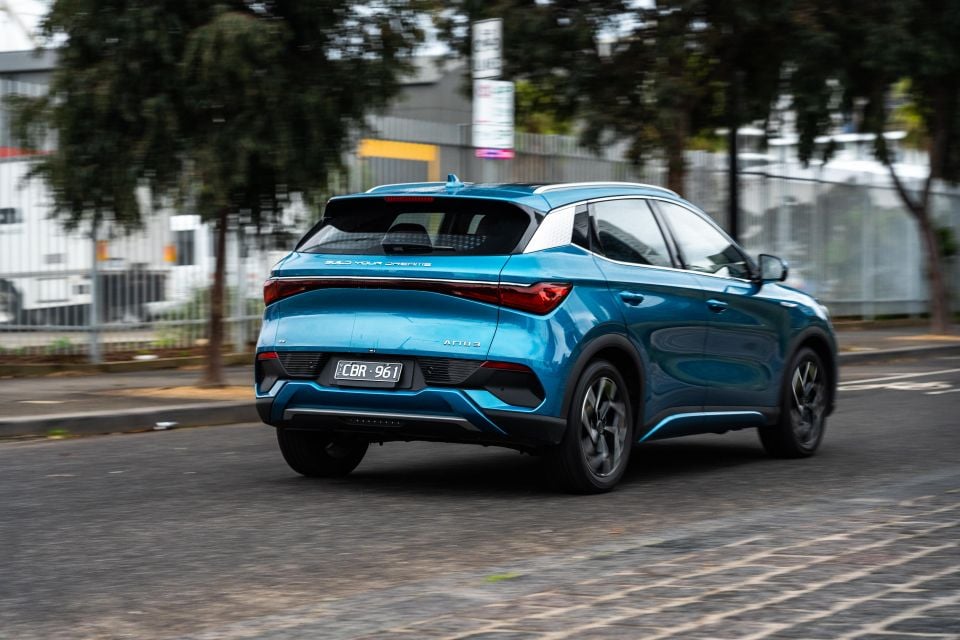
When slowing rather than accelerating, both offer regenerative braking systems using the motor to harvest waste energy, but neither come with a Nissan Leaf-style one-pedal driving option that slows the car to a stop without mechanical braking. This constitutes a miss.
My indicated energy consumption on a defined drive loop in the BYD was a commendable 14.3kWh per 100km, compared to an indicated 17.2kWh/100km for the MG on a similar cycle. In both instances I drove sensibly, but not like a hyper-miler.
This means the BYD proved to be more energy efficient despite being more powerful and heavier. Moreover, its bigger battery means the range gulf between the two on the spec sheet is reflected in reality.
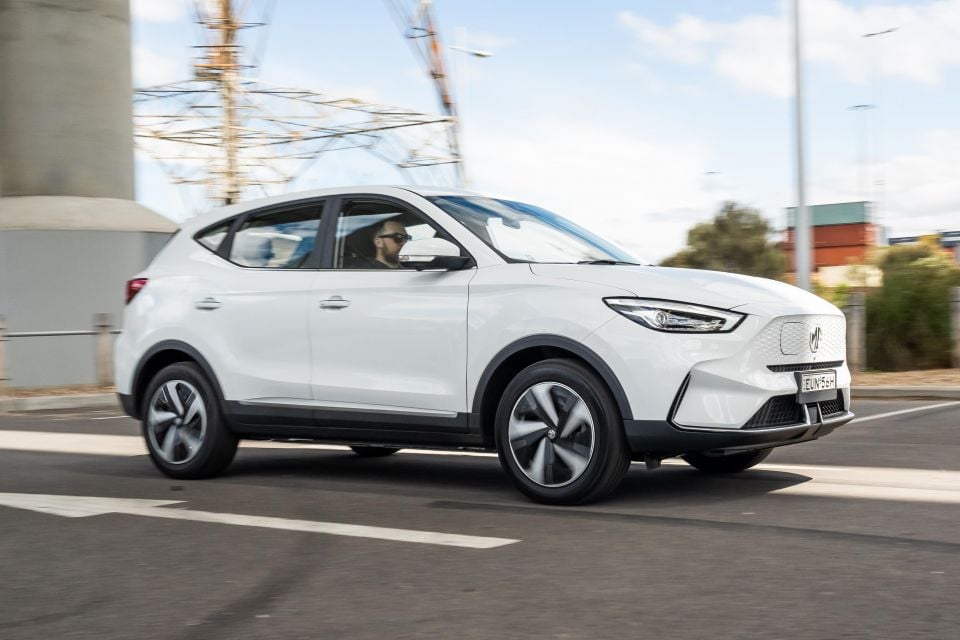
Point of note: EVs are less efficient on highways than urban trips as a rule because you aren’t tapping into the regenerative braking, and there’s more drag. I’d expect the BYD to manage 330-340km range at Australian highway speed limits, and the MG to cover 240-250km.
It needs to be stipulated here that there are myriad additional variables that affect driving range: weather, driving style, tyre pressures, road surfaces, payload and more, so giving a definitive range is a fool’s errand.
The degree of driving refinement in the BYD is quite impressive, with minor wind noise from the side mirrors the only thing that really breaks up the serenity in a noticeable way.
MG also made improving noise suppression a core focus with the recent update: adding sound-deadening, making the grille smooth, and fitting better tyres. But its e-motor is a smidgen more noticeable, and it’s a bit louder over small, sharp road imperfections.
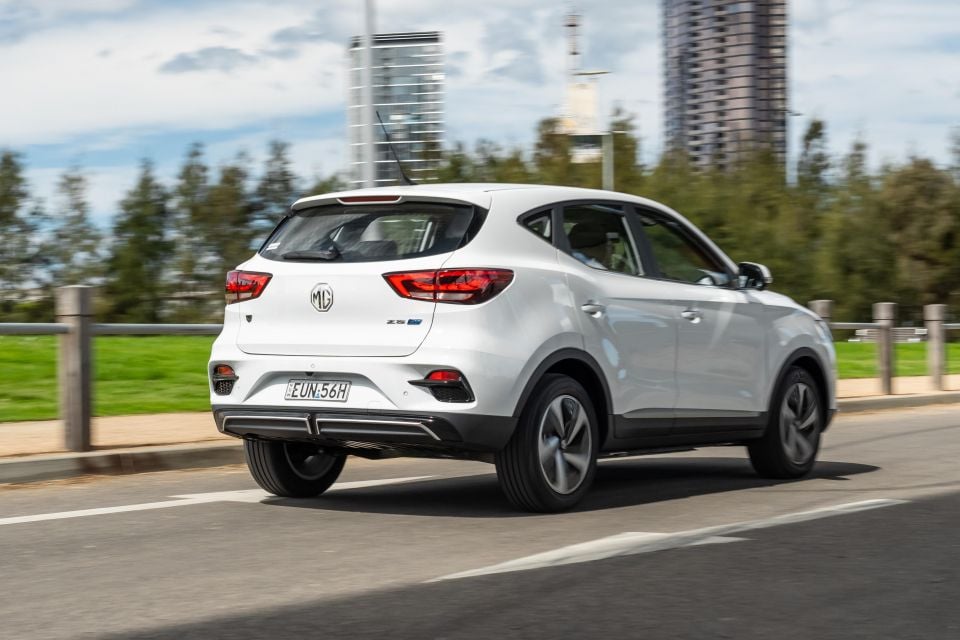
The Atto 3 uses conventional MacPherson strut up front, and multi-link independent rear suspension, and it’s tuned to be very soft and pliant. On the negative front, the Atlas Batman A51 tyres didn’t seem all that confidence-inspiring and there’s plenty of body movement in corners.
The MG’s suspension layout also comprises a MacPherson layout at the front, but a more basic torsion beam rear that means a little more pogo-ing over uneven surfaces. It’s still relatively well behaved in terms of primary ride and it uses better Michelin Primacy tyres, however.
Overall, neither of these EVs do much good in corners and are far better suited to running suburban errands or cruising on freeways. The BYD felt a little more resolved overall, though the MG’s damper tune and tyres struck me as superior.
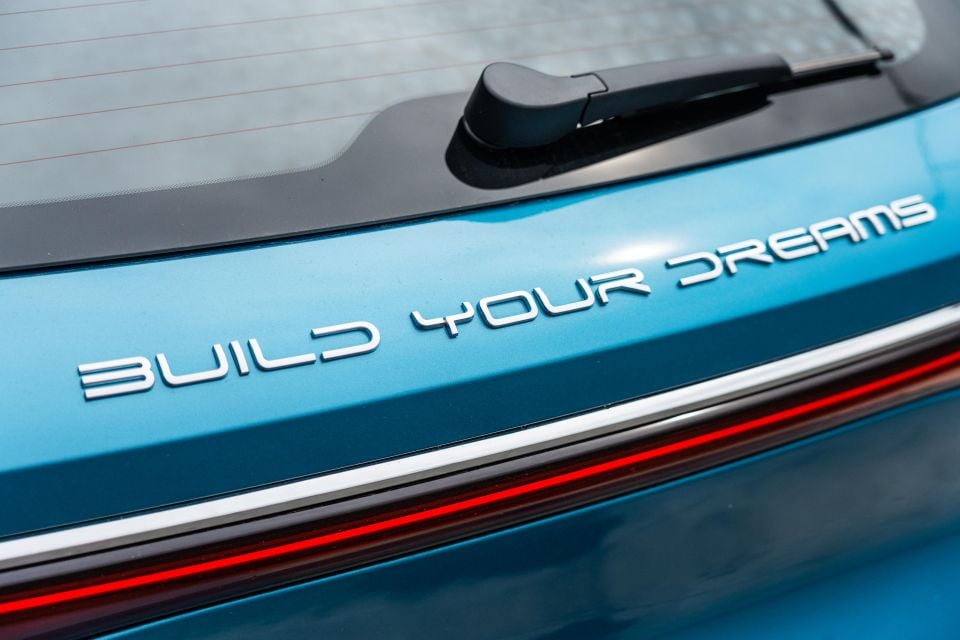
BYD
The vehicle warranty varies.
The battery and the drive unit are covered for eight years/160,000km and eight years/150,000km respectively, while most other components are covered by a six-year/150,000km warranty.
However there are some exceptions such as the lights and suspension parts (four years), and multimedia system and various bearings (three years).
Servicing can be performed either at a BYD Service and Repair Centre, part of the aforementioned Eagers network, or at certain independent mycar sites. Mycar, formerly Kmart Tyre & Auto, has a partnership deal with BYD Australia to help maximise its service coverage.
At the time of writing there were 30 service sites for the Atto 3 open, and 11 more listed as “coming soon”, covering all regions bar the Northern Territory.
Those who have been following the BYD rollout might recall its distributor responded to widespread criticism, cutting original service pricing but standing firm on the warranty.
Advertised BYD servicing plan:
That’s an average of $299 per visit over the first eight years. There is a cheaper option for those who drive lower mileage, however.
You can pay fixed prices of $189 for every 12-month service up to the five year or 60,000km service – if you average under 12,000km annually
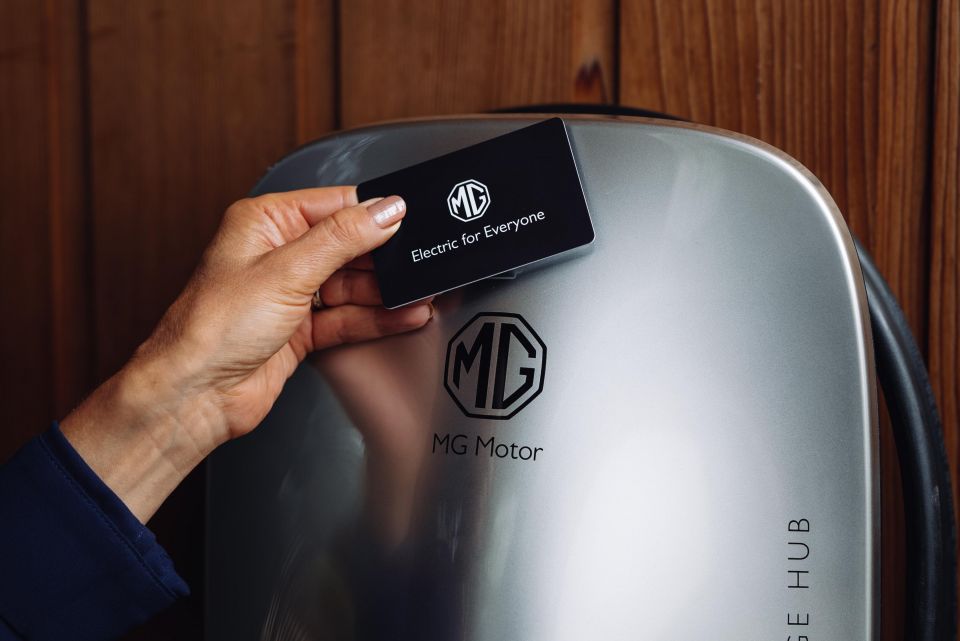
MG
The ZS EV comes with a seven-year warranty, and the company also says it has 83 franchise dealers trained to handle EV servicing.
Plus the servicing intervals are longer, so the servicing should be cheaper.
Advertised MG servicing plan:
MG Australia also offers dealer-led solutions for home charging, selling 7kW single-phase and 11kW three-phase wallboxes with inbuilt RFID reader, ethernet, and internet connectivity.
The units cost $1990 and $2090 respectively, and will charge any vehicle with a Type 2 socket.

Frankly, they both make a number of better-known Japanese, German and Korean brands look behind the times, and signal a new era of Chinese automotive expansion.
The MG ZS EV has great pricing, low running costs, a more conventional interior, a warranty that seems to have fewer asterisks, and more dealers – with in-house wallbox solutions.
It’s a truly commendable cheap EV that’s perfect for a second family car, or a toe-in-the-water for a forward-thinking buyer who wants to slash their weekly fuel bills.
But the BYD Atto 3 is the better car. Yes, the jury is ultimately out on the Australian distributor and service partners, with MG being more established as a brand here – but in terms of interior design, features, technology, efficiency and range, and motor performance it’s the winner.
Even if we were testing the Standard Range Atto 3 against the MG ZS EV Essence we suspect the result would stay the same, albeit the margin would potentially be slimmer.
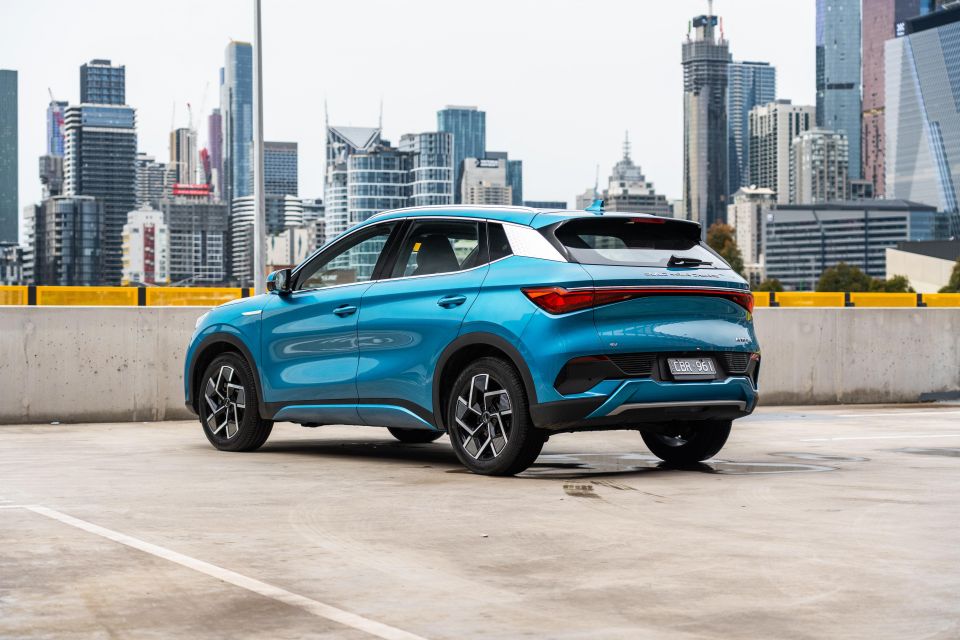
Click the images for the full gallery
MORE: 2023 BYD Atto 3 review MORE: 2023 MG ZS EV Excite review
Share your thoughts with us in the comments below!
Share your thoughts and write a review of a car you own and get featured on CarExpert.


Ben Zachariah
14 Hours Ago


Damion Smy
15 Hours Ago
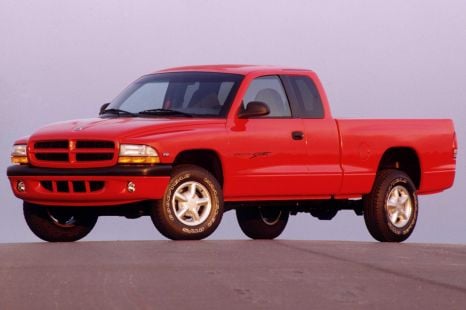

Derek Fung
15 Hours Ago


Ben Zachariah
16 Hours Ago
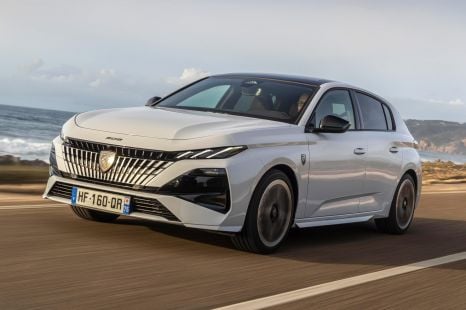

Matt Robinson
22 Hours Ago


CarExpert.com.au
1 Day Ago